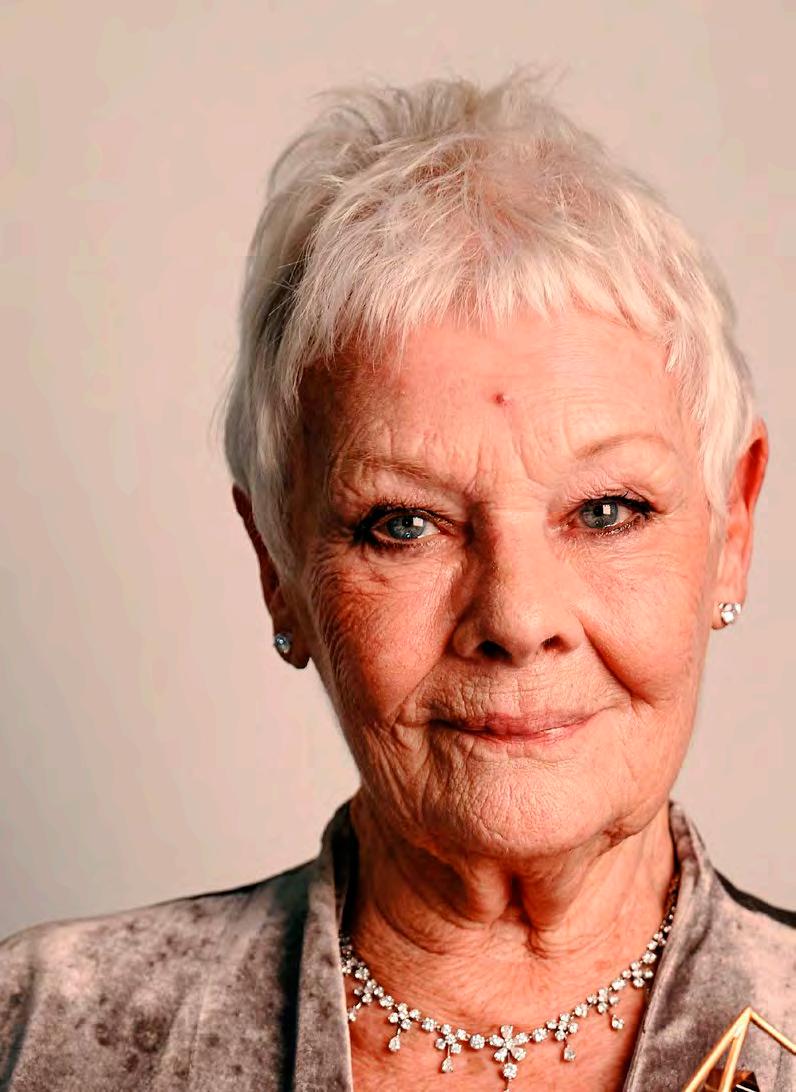
JUDI DENCH
On TikTok, Theatre And The Troubles
The Body Plan
How To Age Well From Head To Toe
12 Crazy Car Stories You Won’t Believe



How To Age Well From Head To Toe
12 Crazy Car Stories You Won’t Believe

The Roger Black Easy Fold
Treadmill is a customer favourite and a stroke of genius when it comes to ease of use and design.
Not only can this treadmill be stored completely flat or against a wall, it is delivered boxed, fully assembled and ready to ‘click and use’.

“It took me a while to decide which brand of treadmill to go for but knowing a friend had one of Roger’s machines helped me make my mind up. The treadmill was delivered on time, it was already set up we just had to remove the packaging and lift up the handle to get it into it’s working position, plug it in and away you go. It works on kilometres per hour not miles and if you stop I don’t think it can resume the time and distance you’ve done it resets but that is only a minor thing. There is somewhere to put your mobile or tablet so you can listen or watch something while you’re exercising. Overall it’s a good treadmill for the price and I received great communication from Roger himself when I had a question to ask.” Mandy, Banbury
Roger Black is offering a 10% discount on the full www.rogerblackfitness.com range of home fitness equipment for all Reader’s Digest readers. Please use discount code ‘DIGEST10’ at checkout. Standard T&Cs apply
16 I T’S A MANN’S WORLD
O lly Mann extols the many virtues of Airbnb when it comes to a weekend getaway
ENTERTAINMENT
20 INTERVIEW: D AME JUDI DENCH
The legendary British actor on mastering TikTok, the Troubles, and staying hungry for c hallenging roles
28 “ I REMEMBER”: T ORI AMOS
The US musician looks back on her career beginnings, fr iendship with Neil Gaiman, and love of Led Zeppelin
HEALTH
36 THE BODY PLAN
Here’s everything you need to know about ageing well from head to toe
INSPIRE
64 DE WITT WALLACE
Part two of the remarkable story of the founder of the Reader’s Digest magazine


72 CR AZY CAR STORIES
The most interesting thing about cars isn’t the car at all, argues motoring writer, Simon Heptinstall
80 B OLD BOTANISTS
Discover the facinating world of Victorian “plant hunters”
88 TRAVEL COL OURFUL CURACAO
Exploring the rich history, food and beaches of the Caribbean haven






Equity release can help you to access tax-free cash from the value of your home. With a Lifetime Mortgage, the UK’s most popular form of equity release, you can access your property’s wealth in a tax-free lump sum or reserve some funds for later use.
Releasing equity is a great way to gain funds in your leisure years as there are no required affordability checks, with how much you can release being primarily determined by the value of the home and the age of the youngest homeowner instead.
Lifetime Mortgages can be highly varied and include different features to protect your interests, based on your unique situation. At Reader’s Digest Equity Release, we have filtered the products currently offered by different lenders to

provide our customers with a selection of the most suitable, with qualified advice available to then help you assess your options.
Your adviser will also discuss with you the alternatives to equity release, and the impact of each option, to reach a decision as to whether equity release is the best solution for you.
The Equity Release Council (ERC) is the industry body which aims to ensure best practice from providers, protect customers, and reduce risk. They hold their members to a set of guidelines, and these guidelines are at the forefront of the service that Reader’s Digest Equity Release provide.
With a Lifetime Mortgage you have the right to remain in your home for life and you will also retain full ownership. You will
also never owe more than the value of your home thanks to the no-negative-equity guarantee built into all plans provided by ERC-approved lenders. The loan is only repaid when the youngest homeowner no longer resides in the property, either after they have passed away or moved into permanent long-term care.
As you are releasing equity from your home now, the funds remaining for your estate in the future will be reduced. An expert adviser will be able to help you to manage the impact that releasing equity will have on the value of your estate and entitlement to means-tested benefits. They will discuss the features and risks and provide you with a personalised illustration so that you can accurately view how the loan will change over time.
If you’re interested in how equity release can help you, call us today. n
SENIOR EDITORS Anna Walker, Eva Mackevic
EDITORIAL ASSISTANT Marco Marcelline
ART DIRECTOR Richard Cooke
ADVERTISING Jigs Pankhania
HEAD OF FINANCE Santwana Singh
FINANCE MANAGER Irving Efren
MANAGING DIRECTOR Julie Leach CHAIRMAN Gary Hopkins
TRUSTED MEDIA BRANDS INC (USA)
President and Chief Executive Officer
Bonnie Kintzer
Editor-in-Chief, International Magazines
Bonnie Munday
WE PAY...
£50 for the star letter and £30 for regular letters.
Email readersletters@readers digest.co.uk or go to readers digest.co.uk/contact-us
WE ALSO PAY...
£30 for the true stories, anecdotes, jokes in Laugh! and You Couldn’t Make It Up…, and contributions to end-ofarticle fillers and My Great Escape
Email excerpts@readersdigest.co.uk or go to readersdigest.co.uk/contact-us
We cannot acknowledge or return unpublished items or unsolicited article-length manuscripts. Do not send SAEs. Article-length stories, poetry and cartoons are not requested.
Contact Customer Services for renewals, gifts, address changes, payments, account information and all other enquiries. Call 0330 333 2220* or email customer_service@readersdigest.co.uk
Reader’s Digest is also available in audio and accessible etext editions from RNIB Newsagent, for blind and partially sighted readers. Call the RNIB Helpline on 0303 123 9999 or visit rnib.org.uk/newsagent
Annual subscriptions are available to be delivered monthly direct to your door. For our latest offers please visit readersdigest.co.uk/subscribe Or telephone us today on 01778 392461.
Gift subscriptions also available.
UK rates may vary. Overseas rates: Republic of Ireland £45, Europe £50 and Rest of the World £60 for 12 month subscription.

How many times have you walked around a botanical garden or greenhouse admiring the huge diversity of exotic plants on display? What we don’t often stop to consider, however, is how these colourful wonders ended up on our shores in the first place. On p80 we discover the thrill-a-minute story of Victorian plant hunters. These real life Indiana Jones adventurers took their life into their hands in order to discover new species of plants and bring them back to British shores. From almost drowning in whirlpools, to bear attacks, to being hunted down by armies of heavily-armed Tibetan monks, their stories are almost unbelievable in their drama and are sure to give you newfound appreciation for the wonders of your garden.
If I could have anyone’s singing voice in the world, it would probably be Tori Amos. With her seductive, siren-esque vocals, mesmerising stage presence and a fountain of furiously red locks pouring over the piano, she’s always been a huge music idol of mine.

Naturally, then, I was incredibly happy and excited when we got to interview her for this month’s issue. On p28, she opens up all about starting out as a young musician in gay bars, her natural affinity for the piano, and her love of Led Zeppelin.
And on p121, we celebrate the piano’s older brother, the harpsichord (an instrument Tori is equally electrifying on—just ask YouTube), with a review of a splendid new album of some of baroque music’s greatest classics. Happy listening!
LETTERS ON THE January ISSUE
We pay £50 for Letter of the Month and £30 for all others
What a fascinating article “A Polar Bear’s Journey” was in your January issue.
Bears have captured the hearts of so many over the years, through childhood memories of timeless characters like Winnie the Pooh and Yogi Bear.

But most people are not aware of the harsh realities of how a polar bear lives, and the ways in which they and their cubs survive in extremely forbidding environments. I enjoyed the opportunity to learn more about them.
This article, however, sends an alarming message that all life is
I found “The Style Resolutions We Should All Be Making For 2022” most interesting. A few years ago I unsubscribed from every shopping website so I wouldn’t be tempted to buy anything.
now affected by climate change. People, plants and other animals are regrettably finding themselves on this melting ice sheet— not only the polar bear. She is not alone. And they are being affected now—climate warnings are not just a prediction about the future.
As the world confronts a warming planet, as sea levels rise, as oceans acidify, as rain patterns shift and as weather becomes more extreme, the world must take concerted, creative action to develop a low-carbon economy. Urgently.
GENNA COOPER, LondonI was determined to stop spending money on things I didn’t need. Whenever I was tempted, I asked myself, “Do I really need this?” When it came to clothing, the answer was always the same: no.
It was hard to stop
buying new clothes in the beginning. But saying “no” gave me a sense of empowerment… Eventually, it started to become easier to resist the temptation to shop.
SEREN ROBERTS, Flintshire
I loved reading your article on Moroccan taxis in the January issue. It’s understandable why Mercedes have been so popular there—they are prestige cars, very comfortable and economic to run. My husband and I have owned two Mercedes and have absolutely loved them.
Our first was a 1976 Mercedes 230E automatic. It had leather seats, was good on long and short trips, and well built, making us feel safe. We sold our beloved car eventually, but missed it so much that we went and bought a newer version, which we drove for years until it got sent to the scrap yard, having done 249,000 miles.
Taxi driver Hasan Mesfar said he would no longer drive taxis as it wouldn’t be the same job without his Mercedes. This is understandable as they are a very comfortable drive, however, new and exciting hybrid and electric cars are here for less pollution. Letting go of the old isn’t always easy but we have to embrace the future for a healthier, cleaner life.
SUSAN KING, BoltonReading Garry’s story reminded me of how cruel cancer is. But at the same time, there are miraculous recoveries, so one should never give up hope. Garry is proof you can beat cancer. I’m so pleased for him that he now has the all clear and has stopped treatment. In October 2020 he competed in a “comeback triathlon”. Amazing.
Some people see cancer as a fight. They’re forced to live with the disease day in and day out. Some days it has the upper hand, other days it doesn’t. People live with it, and the physical and emotional effects have to be endured.
I’ve lost three close relatives and a couple of friends. Cancer Research says, “One day we will beat cancer”. How I hope with all my heart that this is true.
SCOTT YETTON, Cambridgeshire

Have you heard of Mirthy.co.uk? It’s a website that runs live online events - over 60 events a month across every topic you can think of. From fitness classes to book clubs, coffee mornings and fascinating historical talks. All online with recordings available if you can’t make the live event.
My journey with Mirthy.co.uk started after I came across a post on Facebook about their events and my interest was piqued after seeing the variation of events they run.
I’ve since tried out a few of the online events Mirthy offers - the talks, discussions and Pilates classes so far. What’s better when there’s not much to do, or if it’s raining outside, than to know I can just visit Mirthy. co.uk and view their event calendar. When I look at the events they have on I just have to ask myself, ‘what should I do today?’.
Last week I even tried a live cooking class, and then joined the astrology talk - both of which were very enjoyable. These are things I wasn’t already familiar with, but of course found really fun. Doing all of this from the comfort of my own home too - even better!
I’ve never done Pilates before. My friends have, but I’ve never really had the chance to. I’ve always tried to stay active in some capacity, whether that’s joining local classes doing yoga or Tai-Chi. Whilst I enjoy those, after a while I was looking for something more. When I saw that Mirthy. co.uk had a regular Pilates class, I knew I had to give it a try.
My first impression was that Helen, the instructor, was absolutely great. She’s very encouraging and clearly has a lot of experience with running a class for people at varying ages and abilities.
She’s aware of what we’re going through, and makes sure we don’t strain ourselves. She watches out for us and is very encouraging - which is lovely! This just makes you want to do a little bit more.
This week actually marks my sixth week of doing the Pilates classes and I have to say, I’m really noticing a difference. The first thing I notice is that I’m not slouching, I’m much more aware of my posture and I now make a conscious effort to ensure I’m opening up my chest more, which comes from the exercises we do in the class.
The mental benefits are also noticeable - I do feel relaxed during and after the classes too.
One of the primary benefits over everything is Mirthy’s community. It’ll be a similar story for many; my daughters aren’t nearby - one is in Ireland, one’s in Canada. Because of this, the challenge is always going to be loneliness really. And with Mirthy, you do feel that social interaction, you’ve got friends, people to talk to and it’s been really nice.
I’d definitely say give Mirthy.co.uk a go. It’s completely free to sign up and you get to enjoy any of their 60+ events at no cost. You will quickly find something you’ll love. n
To take advantage of this limited-time offer, visit mirthy.co.uk and join for free today






For decades it stood empty: the former Church of Santa Barbara in the northern Spanish municipality of Llanera. The building began to fall into disrepair. Then an enthusiastic skateboarder had the idea of turning the forlorn church into a skate park. That‘s how the Kaos Temple was born. The kaleidoscopic murals were contributed by street artist Okuda San Miguel. According to him, they preserve the spirituality of the place and at the same time fill it with colour and joie de vivre.


Ten years ago, Airbnb passed a milestone: the number of people who had used the service to book a night’s stay surpassed 4 million. In those days, I had a weekly slot talking about web culture on BBC Radio 5 Live, and I pitched the story to my producer. “Too niche”, was his response. “Impressive growth, yes—but in terms of the numbers of tourists, it’s a very small player. Let’s drop it.”
I was reminded of this exchange over the weekend, as I dried myself on the Ralph Lauren towels provided

Olly Mann presents Four Thought for BBC Radio 4, and the podcasts The Modern Mann, The Week Unwrapped and The Retrospectors
for me by my "host", John, in his Eton townhouse (£213.41, house manual on top of the fridge, please do not consume food in the bedrooms). Staying in somebody else’s home, or second home, for a short-term break was evidently even recently perceived as the preserve of Silicon Valley nerds and nomadic couchsurfers but has, over the past decade, become the default way I (and my mates, and my mum, and her mates) choose to visit a city.
When our summer family holiday in a five-star resort in the Canaries got covided (for a second time) in 2021, an Airbnb in the Cotswolds was the obvious last-minute replacement (sure, it rained every day, but they had a GIANT CONNECT 4 in the garden!). Equally, I now turn to the website for my work needs: if, for example, I’m seeking space to


record a podcast interview, I rarely think to hire a professional studio, especially in the age of social distancing: I use Airbnb. Even our honeymoon, in the Costa del Sol, was in Peter’s gaff in San Pedro (I’ve never met Peter, but I have used his lilo, which feels pretty intimate. And I know from his profile that he lives in Bournemouth, likes yoga and bird-watching, and speaks fluent German. Five stars.)
Anyway, my wife and I have decided—after two years largely locked down in Hertfordshire, charming though it is—to take regular mini breaks, which is how we ended up in John’s pad in Eton. Once per month or so, just to give us a change of scene, we splurge £250 to take the kids away for a night, and have Sunday lunch.
At first, we attempted the Posh Country Hotel route—a spa resort near Cheltenham, with a balcony overlooking a golf course. We booked a "family room"; the concept being that as our kids drifted off, we’d recline on the balcony, read our books and drink red wine. But then it rained. Heavily. So, we had to take cover behind the open balcony doors—placing curtains over our heads to block the summer
sunset from waking the children—getting progressively colder and wetter, yet paralysed into silence for fear of stirring the sprogs. Next morning, my two-yearold terrorised the breakfast buffet with gusto, slurping segments of tinned peaches in such an abhorrent fashion that numerous other guests switched tables. It was at this point we reverted to Airbnb.
And we much prefer it. Away from the eyes of tutting tourists, our boys are liberated to treat the joint as a genuine home-from-home: ie, using every surface, from bookshelf to boiler cupboard, as a gigantic Hot Wheels track. Sometimes they share a room, or sometimes the toddler shares with us, but as there is always a separate living space (actually separate, unlike the openplan "suites" offered by most hotels), we can chat and watch telly once they’ve gone to bed. We use the kitchen to make them dinner and breakfast that they’ll actually eat, which saves us money; then we get a takeaway from Deliveroo (another technological marvel) once the kids are in bed.
I’ll admit that this routine can still present challenges. Simply loading up the car with the requisite travel cot and mattress, bag full of nappies, scooters and helmets, snacks and drinks, and appropriate
"in-flight entertainment" (an old iPad containing enough Paw Patrol episodes to survive the apocalypse) is an activity that, itself, inspires dreams of holiday.
But it’s always worth it. How I relish the small triumph I feel when I’ve located the parking space for our rented property, after ten minutes of aimlessly driving around a complex one-way system. How I love perusing the owner’s art and books, piecing together my impression of their personality from the clues they’ve left behind in random artefacts (look, he’s got a signed Bruce Springsteen poster AND an entire library of Jeffrey Archer! Did he turn Tory as he
got older, or inherit the books from his dad?). And how I adore lounging on old knackered Chesterfields, rather than the clinical furnishings of chain hotels.
Best of all, I enjoy waking up on Sunday morning and being somewhere new—yet not being constantly aware, as one is in a hotel, of the financial transaction underpinning the experience. Rambling around cities, I’ve often found myself idly imagining what it would be like to live there, and with Airbnb one gets quite a bit closer to actually knowing the answer. Which is why, I suspect, it’s no "small player" anymore. n
Since 1953, every single King of Saudi Arabia has been a son of the first king, Ibn Saud. His oldest son was born in 1900 and the youngest in 1952. He has roughly 1,000 grandchildren.
In Joseon-era Korea, glasses represented prestige and status. As such, it was polite to remove one's glasses in front of royalty, older people and superiors. The first bespectacled monarch, King Jeongjo, therefore had to choose between removing his glasses to be polite to his council or wearing them to read.
In 1523, Christian II of Denmark was succeeded by Frederick I, who was succeeded by Christian III, who was succeeded by Frederick II and so on till 1972, when Queen Margrethe succeeded her father to the Danish throne. For 449 years, the Danish king had been named either Christian or Frederick.
King Victor Emmanuel III of Italy was called "little sabre" because his short stature (5ft) required his uniform to be equipped with a sabre shorter than the ordinary in order to not touch the floor when it was attached to the belt.
“
“Don’t
The great actor opens up about stage fright, working with Kenneth Branagh and her viral TikTok videos
I might cough a bit… don’t get alarmed!” says Dame Judi Dench. In these pandemic-riddled times, any tickle in the throat is a concern—especially if you’re 87 years old, as she is—but it’s nothing serious, she assures me. With a floral scarf wrapped around her neck, her white hair neatly cropped, the acclaimed star of The Best Exotic Marigold Hotel and Philomena, looks in fine fettle when we connect over Zoom.
These past months, the biggest issue Dench has experienced, like so many of us, is psychological. “The thing about COVID is that it mucked up the rhythm inside me, I feel,” she says. “I don’t know what the outcome of that will be. But it’s a
curious, odd, and unsettling feeling.” She pauses for a second. “Hopefully, we’ll get back to some kind of, well, normality… or something approximating normality.”
For an actress who has been performing professionally since 1957, rarely stopping, it’s no surprise to find her destabilised by the past two years. Theatre, television and, more recently, film, have been her lifeblood. So how did she cope with the enforced lockdown? Baking banana bread? “I planned to learn all the sonnets, the Shakespeare sonnets. I didn’t do that. I just didn’t do it,” she sighs. Inertia got the better of her. “You get nothing done.”
Fortunately, her 24-year-old grandson Sam Williams paid a visit

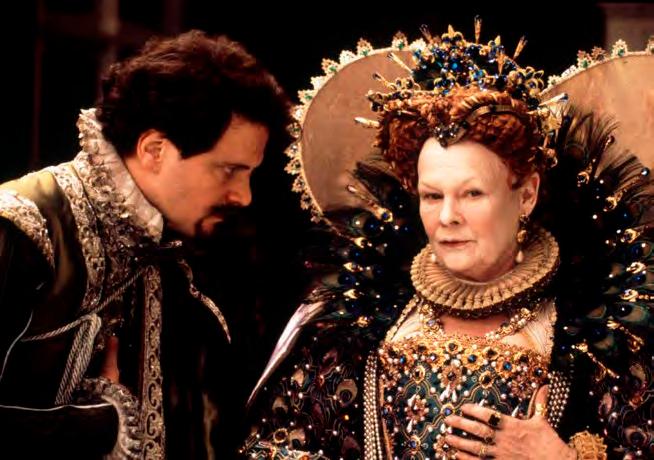 In Shakespeare in Love with Joseph Fiennes
In Shakespeare in Love with Joseph Fiennes
and taught her all about social media site TikTok. “He’s a TikTok fiend,” she chuckles. Suddenly, Dench was dancing in micro-videos with Williams. “We would do it. And I’d say, ‘Can we [film] that now?’. He said, ‘No, no, no—more rehearsal! You need more rehearsal’. That went on for weeks!”. The clip, which sees Dench moving in perfect harmony with Sam and his mother—her daughter Finty Williams—has already been viewed 1.2 million times.
Quite apart from staying limber and becoming a viral sensation, Dench is desperate to get back to work. While her eyesight has long been affected by macular degeneration, making it difficult to
read scripts, there has never been any thought about retiring. “I’ve always thought, One is very lucky to be employed!” she says, modestly. “I just think that and I always get frightened at the end of the job, because I think I’m not going to be employed again, and then feel very relieved at the beginning of the next one.”
Winning an Oscar (for her imperious Queen Elizabeth I in Shakespeare in Love), a Tony, seven Olivier awards and a staggering ten BAFTAs for television and film, it’s bewildering to believe that Dench still gets the jitters. Even when she scores a job, she feels anxious. “I’ll say! I get more anxious now!” she

“I JUST ALWAYS HOPE THAT I WILL BE ASKED TO DO SOMETHING DIFFERENT, UNEXPECTED”
cries. “Oh, yes, much more anxious. Well, there’s more things to consider and more things to find out and more things to learn about. And you think, Oh God, have I got the energy to do this?”.
While her early years were spent working with the Royal Shakespeare Company, she became a household name in the 1980s, starring in four series of sitcom A Fine Romance with her late husband Michael Williams. Yet it was in the following decade,
winning a first Oscar nod for her sensitive take on Queen Victoria in Mrs Brown, that she became a film star. Then in her mid-sixties, this late bloom left her hungry for more. “I just, really, always hope that I will be asked to do something different,” she says. “And perhaps not expected. Or something that has no reference to anything I’ve done before.”
That is exactly the case with her new film, Belfast, directed by her old friend, Kenneth Branagh.

They’ve worked together multiple times—12, she counts—but this semi-autobiographical account of Branagh’s childhood in the Northern Irish capital in 1969, just as the Troubles began, is unlike anything Dench has ever done. With the story seen through the eyes of the young Buddy (Jude Hill), Dench plays his Granny, almost unrecognisable thanks to a pudding bowl grey wig and a treacle-thick Irish accent.
She first met Branagh 25 years ago, on a television production of Ibsen’s play Ghosts, with both in mischievous mood. “We both got sent out of the studio for laughing,”
she recalls. “We have very much the same sense of humour.” Their birthdays—his on December 10, hers on December 9—are also (almost) shared. “I just love working with him. I just love it. It’s very varied, all the things I’ve done with Ken. And I’ve directed him and been directed by him and been in things with him. It’s always different.”
Shot in inky black-and-white, Belfast won the People’s Choice Award at the Toronto Film Festival last year and it’s a hot favourite in this awards season, with Dench a likely candidate in the Best Supporting Actress category. But away from the gongs and the
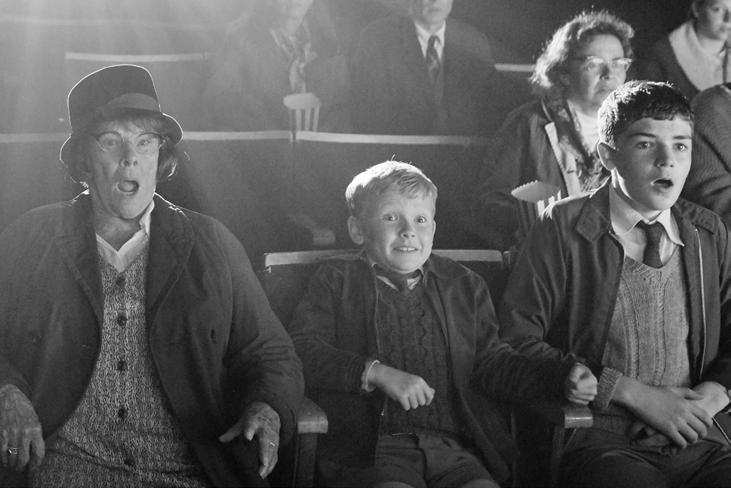
glamour, it’s a highly personal look at childhood and the difficulties of growing up in a politically turbulent era. “I thought it was from the heart, I must say,” says Dench. “I thought it was very much from the heart and I understood why he had written it.”
Dench has strong connections to Ireland. Her mother was from Dublin and her father, a doctor who hailed from Dorset, also grew up in southern Ireland. By the time Dench was born, her family were living in York but when the Catholic-Protestant conflict escalated in Ireland in the Sixties, she remembers just how much it affected her relatives. “We had family
in Northern Ireland, and I think we were concerned all the time about it. Everybody I remember was.”
Dench grew up as a Quaker, though her beloved husband—who died in 2001, 30 years into their marriage—was Catholic. She recalls being advised to convert before they married. “And then a great, great friend of ours, Tom Corbishley, who was the master of Campion Hall [at Oxford University], said, ‘No, no, no—you mustn’t convert. On the page you may not meet, but off the page, you do.’ And that was a wonderfully quiet, sensitive, loving thing to say.” She speaks fondly of Williams, especially when we move

onto her time playing James Bond’s MI6 superior M, a tenure that began with 1995’s GoldenEye. “Mikey, my husband, longed to live with a Bond woman! He longed for it!” she chuckles, softly. She recently went to the premiere of No Time To Die at the Royal Albert Hall, to witness Daniel Craig’s final outing as Bond. “It was a very emotional moment!” says Dench, who featured in the previous eight 007 movies. This time, she pops up as a portrait on the wall—a good trivia question in years to come. “I was frightfully pleased.”
Of course, acting runs in the family—with daughter Finty, 49, also a regular on stage and screen. “I
think both Michael and I knew with Finty that she would probably want to do this,” she says. Dench recalls her time working with Daniel Day-Lewis on a 1989 production of Hamlet at the National, when she played Gertrude. Finty visited her dressing room. “When I came up after a scene, she was dressed entirely in my clothes from the closet scene, so I kind of thought, Oh, hello, this is the way the wind blows!”.
Her grandson Sam, on the other hand, isn’t interested. “He’s no desire whatsoever to act,” says Dench, who recollects watching him in a school play. “All the other little children came on and were all standing there and waving, trying to attract their
With her grandson Sam Williams at a screening of Belfast

parents. Not Sammy. Sammy just stood sideways to present the smallest amount of himself!” Nevertheless, last year, he joined Dench and his mother for “A Dench and 2 Williams,” an on-stage “evening with” event. “The person who was the least nervous was Sammy. Sammy was so calm. Finty and I were nervous wrecks!”
While he may not join the family business, Dench’s curiosity and creativity remains undimmed. She’s already onto her next movie role— in Allelujah—which reunites her with Richard Eyre, who previously directed her to Oscar nominations in two sublime films, Iris and Notes on a Scandal. This adaptation of an Alan Bennett play will see her play
Mary, an elderly patient residing in a Yorkshire hospital on a geriatric ward threatened with closure.
Our time is almost up, but I want to finish by asking a hypothetical. After all the success she’s enjoyed, is there anything she’d tell her younger self if she could? “I don’t know,” she murmurs. “Don’t be so susceptible.” To what? “To falling in love with people!” Was that what she was like when she was younger? “Oh, certainly!” she coos. “It’s such a glorious stage, isn’t it? You can’t kind of resist to give it up. And then you do it all over again.” She giggles. “Just hopeless!” n
Belfast is in cinemas across the UK now


Singer-songwriter Tori Amos, 58, arrived on the music scene in the early 1990s and has marched to the beat of her own drum ever since. She reflects on her early days performing in bars, the lessons she’s learned along the way and building a life in Cornwall

MY POPPA WOULD SMOKE A PIPE WHILE HE SANG. He was a Methodist minister and I remember him singing on the porch in North Carolina. I was born and lived there until I was ten, and we relocated to Maryland when his ministry moved. My mother was sunshine. She was the warmest sunshine ever—never raised her voice, always encouraging, always looking for the good things in people. She used to say: “It’s too easy to find the negative, look for the good. There’s good in everybody.”
NOBODY TAUGHT ME HOW TO PLAY THE PIANO. It’s just something I was able to do from a young age. Somehow I sat at the keyboard and

I was playing it, without knowing why or how. People would act surprised, like, “What’s happening?,” but when you’re a child and you can do something you don’t think, How did that happen? I must have been two-and-a-half when I started and I never questioned it. I wrote my first song when I was three. I can’t recall what it was called or what it was about but writing and playing were like breathing to me.
I ATTENDED THE PEABODY INSTITUTE FROM AGE FIVE.
I was studying classical piano at the institute, which was part of The Johns Hopkins University in Baltimore, and I really liked my piano teacher. A lot of the other

students were teenagers and they were really affected by the music coming out of the radio more than the music we were being taught. They were obsessed with and energised by the music of the late 1960s, they were protesting the Vietnam war, there were all kinds of things going on, but I was just a little girl.
and the gay bars were especially welcoming to me and my dad, who chaperoned me. The clientele would come over and ask my dad: “What’s the plan? What’s the career trajectory?” It’s not like today, where you have the internet; we were just
figuring out how to negotiate the music business and they’d give us advice like, “Make sure your repertoire is vast and you have all the genres covered for when you take requests.” They put a brandy snifter on top of the piano and put a couple of dollars in it, just to get me started.
[after Heather Locklear’s character on Dynasty].
I was around 17 and it was just before I began sending demos out to record companies. Then, a friend of mine brought along some guy she was dating to see me perform and he said, “You’re a Tori’.” I was like, “Yeah, you’re right.” Then someone in the bar said that it was either a

pine tree or a political party in England and I went, “I’m going with the pine tree!” So I was no longer Myra Amos, I was Tori Amos.
AFTER MOVING TO LOS ANGELES
IN 1984 I formed a band called Y Kant Tori Read and made an album that wasn’t very good and wasn’t a success. But I toiled away and everything changed when my first solo album Little Earthquakes came out in 1992. All of a sudden I didn’t have to play piano bars and people were buying tickets to see me in concert, not spilling beer and talking loudly over the music. I’m grateful that I had that time in the clubs and bars, though. I didn’t go from the bedroom or the garage to
the recording studio and stage; I went from bar to bar, from East Coast to West Coast. People call it “paying your dues” but I see it more as gaining awareness.
NEIL GAIMAN WAS GIVEN A TAPE OF LITTLE EARTHQUAKES BEFORE IT CAME OUT by an artist friend of mine and Neil gave me some really good advice [Laughs]. He said, “I hope you pursue this as a career.”
We became friends after that and he’s a wonderful human being. He has time for people and one of his great qualities is how encouraging he is towards up-and-coming writers.
MAKING THE FOLLOW-UP ALBUM, THERE WAS A LOT OF PRESSURE.
Tori at the Marbury Bar, 1983
I recorded Under The Pink in New Mexico and there was always the possibility it wouldn’t do well but I was very focused on not trying to become something I wasn’t just to please people, but rather to write songs that I felt were good. And it really paid off because it was an even bigger hit both in the US and the UK.
I WAS A HUGE LED ZEPPELIN FAN so when I got to work with Robert Plant in the early 1990s that was really special. I’d grown up listening to their music and I learned a lot from him about how he ran a recording session—how he treated his band and everybody involved. It was just really respectful.

UNDER
TOUR my sound guy [Mark Hawley] was the guy I eventually married and we could not agree which side of the river to live on. He was South London and I was living in North London. He said, “We can’t decide, so let’s move to Cornwall” and I went, “OK, fine.” So we got a place in Bude and we now divide our time between there and Florida.
MEETING MARK WAS LOVE AT FIRST SIGHT FOR ME, but for him it wasn’t because I was the boss and there’s a culture among the crew that goes, “Keep your hands off the turn.” I was a grower for him and we worked together for many months before we had our first date.

LOSING MY MUM WAS REALLY PAINFUL. [She died in 2019]. She’d had a severe stroke where she was partially paralysed and she was suffering. It seemed to affect her mental state as well but there were moments when she was with us. It was a tough time and it was cruel to want to keep her around but when we lost her I hadn’t realised how much I’d miss her.
OUR DAUGHTER WAS THE MISSING PIECE FOR ME. Natashya was born in 2000 and it was like stepping into a different role. My mum always told me, “You will not understand how much I love you until you have a child” and she was right. I didn’t understand how your
priorities change. Parenthood affects people differently and there isn’t a handbook. People give you advice but you’re learning all the time.
I LEARNED SO MUCH FROM WORKING ON THE MUSICAL The Light Princess at the Royal National Theatre in 2013. I wrote the music and lyrics and I loved collaborating with all the different departments, seeing how they looked at it as a whole, from the set design to the lighting. I enjoyed working with the actors, with Samuel Adamson who was the playwright and the director Marianne Elliott—to see how she saw things and what she could pull out of an actor, but also, what she couldn’t. I began to respect and

value what a good actor brings to the table. Before that I just thought, Yeah, they’re all overpaid.
WORKING WITH [MY DAUGHTER] NATASHYA IN THE STUDIO WAS GREAT. We recorded a song called “Promise” together in 2014, when she was just 13 years old, and she really knew what she wanted. She still does. She has her own ideas about things, and she sang on three songs on my new record—including as the choir on “Devil’s Bane”, so I jokingly call her The Devil’s Choir. It’s funny because she’s not a wild child; as she’ll tell you, she was born as an 80-year-old because she’s not a party animal. She has friends and a boyfriend but you’re not gonna see Tash at a rave.
RECORDING AN ALBUM IN CORNWALL WAS A BLESSING.
It was during lockdown and we had a state-of-the-art recording studio. Before the pandemic I was a good traveller and I’d jump on a plane and go visit people. Mark would say, “Go away so I can miss you.” Then suddenly it wasn’t possible, but that makes you reevaluate everything. I had to find a chair instead and “travel,” like I did when I was five, in my head. n
As told to Simon Button
Ocean To Ocean is out now on CD and vinyl. Tori tours the UK from March 11, with tickets available through toriamos.com
You can maintain strong bones in suprisingly easy ways

There are signs you should look for on your skin
From head to toe and inside out,

There's a promising new treatment for heart disease
Machine here’s how to age wellillustrations by Victor Wong By Lisa Fitterman
Remember when we were young and thought we’d live forever? We are, in fact, living longer, but time still takes its toll on our bodies, from extra pounds to wrinkles and aches. Our hearts may not pump as well as they once did, and there are leaks, fading vision, so-called “senior moments,” and maybe even a cancer diagnosis.
Like a machine, everything in our bodies is interconnected—and the bits and pieces eventually malfunction. Dr Berndt KleineGunk, a gynaecologist and head of the German Society for Anti-Ageing Medicine, suggests we think of the human body as a basket of apples in which one rotten specimen can infect the others. In medical terms, these “rotten apples” are called senescent, or "zombie", cells, because they continue to age but stop dividing and refuse to die. As they accumulate, they contribute to everything from age spots to cancer.
In other words, rather than cells that divide and spark health, “we’ve
got zombie cells eliminating it,” says Dr Kleine-Gunk. “That’s why scientists are looking at what happens when zombie cells are removed from the body before they cause damage.”
With 727 million people over the age of 65 in the world—a number expected to jump to 1.5 billion by 2050—scientists are making significant strides in the field of gerontology, with better diagnostics and more advanced treatments. Dr Kleine-Gunk points to the number of startup companies working on drugs that either suppress the damaging molecules that zombie cells secrete or kill them outright.
He also mentions clinical trials in the US collectively known as TAME— Targeting Ageing with Metformin—a drug used to treat Type II diabetes. The trials came about when researchers found that patients taking metformin outlived non-diabetics, and that, in separate studies, it had a preventative effect on dementia, heart disease, and cancer.
Does all this point to a fountain of youth? “Not so much as a potential fountain of health,” says Dr KleineGunk. “Possibly within five years.”
So, because knowledge is power, what can we expect as we get older, and how do we make the best of it?
When we are young, our brain is resourceful and resilient. Even after
The key to brain health is to take on challenging activities
a stroke, it can find new pathways to take over damaged areas. Think of it as a factory that’s producing, storing, discarding, and recycling data, including what Dr Kleine-Gunk calls “microbiological garbage.”
“But as we age, that data starts to accumulate and work less effectively,” he says. “It’s a bit like those messy apartments on television shows about hoarders. You try to step over or around the accumulation, but it can be too much.” One of the effects is dementia, for which there is no cure.
Still, in the last few years, scientists have found that the more engaged and curious we are, the better we can fend off dementia’s effects for longer periods. “You may be able to do one complicated thing and do it well, but the key is to challenge yourself to do different activities—to navigate a strange city or to force your feet to move in unfamiliar ways,” says Dr Gérard Nisal Bischof, a cognitive neuroscientist at the Institute for Neuroscience in Jülich, Germany.
There is also good news for women experiencing lower mental sharpness as they hit menopause. Dr Caoimhe Hartley, who runs Menopause

Health in Dalkey, Ireland, notes that the “brain fog” is likely temporary. “Your brain is just adapting to a different hormonal environment,” she says.
Quick: which of these are heart attack symptoms? A) Nausea. B) Shortness of breath. C) Sore jaw. D) Chest pain. E) All the above.
If you answered “E,” you’re correct. Women are more likely to experience the sore jaw and nausea, but any of these could be a sign that blood flow to your heart is blocked. While heart attacks can occur at any age, the risk for men increases starting at 45, and
for women, at 55. Usually, it’s because of arteries clogged by cholesterol and plaque, and slackening cardiac muscle that pumps less effectively.
That weakening muscle is also why the chance of suffering a stroke doubles every decade after age 55. There are two kinds of stroke: ischemic (the most common), which occurs when a major blood vessel in the brain is blocked; and hemorrhagic, when a blood vessel bursts in the brain. Along with age, risk factors include smoking, being
It’s never too late to quit smoking, because lungs can repair themselves to an extent

sedentary, and obesity. As with many health conditions, lifestyle changes can lower your risk. “Old age is when bad habits and genetics come home to roost,” says Dr Vernon Williams, director of the Centre for Sports Neurology and Pain Medicine at Cedars-Sinai Kerlan-Jobe Institute in Los Angeles.
Life expectancy is rising, so turning 100 won't be so unusual in coming decades. “This means that while ageing, people will want to stay healthy,” says Dr Williams.
Experts agree that genetics aside, the biggest threat to our heart and lungs is smoking. Inhaling a toxic chemical stew hotter than molten lava can lead to incurable chronic obsessive pulmonary disease (COPD), heart disease, and lung cancer. Plus, it increases blood pressure, a major cause of heart attack or stroke.
Dr Williams stresses that it's never too late to quit smoking because lungs can repair themselves to an extent. “And exercise,” he adds. “When you participate in sports, you exercise the lungs and breathe more intensely, and the heart has to beat quicker to make sure the blood supply is there.” It’s a workout that pays double dividends.
For men and women, a common side effect of ageing is incontinence: a bit of leakage when you laugh, or
Claims about the negative impact of HRT have been mostly debunked

a sudden urge to go. This is because our kidney tissue decreases as we age, affecting function. Simple exercises such as contracting the pelvic floor muscles can help. Drugs are also used to calm overactive bladders, as are topical oestrogen creams, which may help rejuvenate atrophied tissue.
For a woman, menopause can come with hot flashes, night sweats, irritability, insomnia, vaginal dryness, and a low sex drive. The good news? Claims about the negative impact of hormone replacement therapy
(HRT)—which came under fire in 2002 when the first results of a major US study suggested that it contributed to breast cancer, blood clots, and strokes—have been mostly debunked. Further research and reviews of that study show that when prescribed to women in perimenopause or early post-menopause, HRT generally has a beneficial effect on the cardiovascular system and mortality.
The ingredients and delivery methods have improved, too. “The formulas are bio-identical to what we produce in our bodies and are now applied through the skin as a gel or a spray, which makes absorption safer and more effective,” says Dr Hartley.
For men, age can often bring prostate problems. The gland starts to slowly grow around the age of 25, which is normal. But by the age of 50, if it becomes too enlarged, it will press on the urethra, making urination difficult. Experts suspect hormonal changes are responsible, but don’t know for certain. What is known is at the first sign of a change, you should see your doctor, who can check for cancer and determine next steps.
Bones, muscles, ligaments, tendons, and cartilage hold our bodies together. As we age, they begin to break down from use. For example, cartilage, which cushions our joints,
begins to tear, causing osteoarthritis. The condition, with which bone can end up rubbing against bone, is irreversible but can be managed through increased physical activity, weight loss, or pain medication, for example.
Dr Hartley warns that 50 per cent of women over the age of 50, many of whom remain undiagnosed, will face osteoporosis, a disease that thins and weakens the bones, making them brittle. “It’ll increase the risk of fracture, can make you shorter, and you can lose mobility,” she says.
But osteoporosis isn’t just a postmenopausal women’s disease, says Dr Williams. It affects millions of men, too, even if they have larger skeletal frames and don’t go through extreme hormonal changes. The US Centres for Disease Control and Protection reports that five per cent of men aged 50 and over have the disease.
“Consider this, too: 33 per cent of men over 50 have low bone density, or osteopenia, which is often a precursor to osteoporosis,” he says. “There are several risk factors, including family history, certain medications, and lifestyle habits.”
As with most things, prevention is key. Eat healthily. Do weightbearing workouts to build up muscle mass, which helps protect your bones, and get a bone scan. If a problem is detected, your doctor

Osteoporosis affects millions of men, even if they have larger skeletal frames
may prescribe drugs to slow, or even stop, bone loss.
There are fewer changes here, except that everything moves more slowly, and the stomach, which is less elastic, can’t hold as much food. Chances are significant that you’ll develop some degree of lactose intolerance because the digestive tract tends to produce less lactase, an enzyme needed to digest dairy foods. Stomach ulcers are common over age 60. They develop when digestive juices damage the stomach lining;
irritants include alcohol, coffee, and smoking. Also common are burping and acid reflux, because your oesophagus has become less responsive. Call your doctor if the problem persists; it could be a symptom of something serious, such as oesophageal cancer.
And then there is celiac disease, a condition in which gluten triggers an immune response, impeding absorption of nutrients in the small intestine. Celiac was once thought to be a children’s disease but is increasingly diagnosed in older adults because it can go undetected for years. “I spend half my day convincing people to get tested for celiac,” says Dr Hartley. “They could be losing weight, for example, or tired.” There is no cure, but the condition can be controlled by eliminating gluten from your diet.
Even shrivelled, our skin is our body’s largest organ: on average, it weighs between seven and 22 pounds and spreads over five to seven square feet. As we age, it becomes thinner and less elastic because we lose collagen and
elastin, proteins that make it soft and smooth. It damages more easily and heals more slowly due to slower blood circulation and, for women, decreased hormone production.
Most of us will have brown age spots. Caused by sun damage, the spots may lead to skin cancers; watch for new moles, or changes in old ones, as well as patches that crust, ooze, or bleed. A biopsy may be necessary to determine if removal through cryotherapy or excision is required.
According to Dr Kleine-Gunk, the skin is just like the brain. “The accumulation of microbiological garbage—from pollution, sunlight, and other factors—affects our ability to heal and fight disease.”
Here's the bottom line: the more we explore, exercise, and rest, the better off we’ll be. And there’s a bonus: the occasional glass of quality red wine can’t hurt either, says Dr Williams, as it contains resveratrol, a chemical thought to aid longevity and health. For most people, he adds, “I’m all for it.” n
Hollywood acting royalty Burt Reynolds took revenge on the National Enquirer, a US publication which he describes as having written "crap about me for years" in a particularly memorable fashion. One Christmas Eve, with assistance from his pilot, Reynolds loaded his helicopter with manure from his ranch, flew over the National Enquirer building and dumped the load over their Christmas tree
Source: theguardian.com

Scientifically proven but simple ways to cultivate contentment

Susannah Hickling is twice winner of the Guild of Health Writers Best Consumer Magazine Health Feature
Whether lending a hand or offering a handout, giving to others has been found to make you feel better. A study from the University of British Columbia found that people who spent money on gifts for others or gave to charity reported being happier than people who spent cash on themselves. Volunteering can make you feel good too, according to a number of studies. And there’s a big bonus: giving your time to help others is also associated with better health.
Research has shown that feelgood brain chemicals like oxytocin, dopamine and serotonin increase when you stroke a dog, and that levels of the stress hormone cortisol reduce. Walking a dog also boosts the feel-good factor, with a
study from the University of Liverpool finding that owners who promenade their pooch get a lift from knowing their dog enjoys it.
3 Listen to music
Upbeat music can have a positive effect on our wellbeing, according to research from the University of Missouri, especially if you actively try to be happier when you’re listening. Psychologists from Goldsmiths, University of London also found that people who listened to positive music judged a grey square to look brighter than it actually was.
4 Watch a sad film
You might need to listen to cheerful music to improve your frame of mind, but it’s not the same when it comes to movies, according to academics at Ohio State University. Watching a tragic film appeared to make viewers reflect on their own relationships and realise how much better off they were than the characters in the movie.
5 Keep a gratitude diary
Californian researchers found that counting your blessings really does benefit you emotionally. Simply jot down the little things you’re grateful for, whether that’s a nice cup of tea, spotting a pretty bird in the garden or a phone call from a friend.
6 Meditate Mindfulness meditation which focuses on experiencing the here and now has been shown to increase feelings of contentment. What’s more, researchers from Massachusetts General Hospital in the US looked at brain scans of 16 people who took part in an eightweek mindfulness meditation course and found changes in the brain that indicated less stress and heightened self-awareness and compassion.
7 Go outdoors
Numerous studies have found being outside is an effective pick-me-up. If it’s a green space, even if it’s just your local park, that’s better still. But best of all, according a University of Sussex and LSE study, is a visit to the coast. Researchers asked people to log their happiness levels on a “Mappiness” app and being by the sea on a warm weekend day came out top.
8 Plan a trip
You don’t have to be lying on a Spanish beach to feel good vibes—just planning and anticipating a holiday is enough, a Dutch study found. The author suggested two shorter breaks in a year were better than one big holiday to stay positive. n
For more weekly health tips and stories, sign up to our newsletter at readersdigest.co.uk
You probably know lots about the heart and brain, but you might be surprised by these facts about another equally crucial organ
Your liver performs 500 vital functions to keep us alive. It processes what we eat, drink, breathe and put on our skin. It cleanses our blood, keeps our glucose, hormones, cholesterol, vitamins and minerals at the right levels and it produces bile to rid the body of toxins and help with digestion. The liver also helps fight infections and give us energy. Impressive, huh?
Liver disease is on the increase. Compared to other major diseases, such as heart disease and cancer, deaths from liver disease have rocketed, increasing 400 per cent since 1970. Most cases are preventable, according to the British Liver Trust.
Liver disease isn’t just caused by drink. The fact that a lot of people associate liver disease with alcoholism has led to stigma. But, in fact, one in five people drink in a way
that could damage it. In fact, along with regularly drinking too much alcohol, the main causes are obesity and viral hepatitis.
There are at least 100 forms of liver disease In the UK. Some of the most common are alcohol-related liver disease, non-alcoholic fatty liver disease (caused by being very overweight, which can lead to a build-up of fat around the liver), hepatitis (there are several different types) and liver cancer.
Most cases of liver cancer occur in people who already have liver disease. Whatever the original cause of the disease, inflammation leading to scar tissue is the end result. This build-up of scar tissue is called cirrhosis. Liver cancer is more common in people who have cirrhosis.
What’s good for the heart is good for the liver. Adopting a healthy lifestyle can help prevent liver disease, including drinking within recommended guidelines. There’s evidence losing ten per cent of your body weight can improve liver function in people with non-alcoholic fatty liver disease. Vaccines are available for hepatitis A—often contracted from contaminated food or drink—or B, which can be spread by unprotected sex or injecting drugs. n
Dr Rachel Evans is a chartered psychologist specialising in eating disorder (ED) recovery
How did you become a specialist in eating disorders? I did a degree in psychology and a master’s in health psychology and then developed an eating disorder. This helped me decide which path to take. I became a research assistant, did a PhD and recovered. Because I have lived experience of an eating disorder, I’m really passionate about it.
Who is most likely to be affected? Anyone, though statistics show EDs are more prevalent among females. Certain personality traits, such as being perfectionist or impulsive or sensitive, might predispose people to EDs. Children as young as seven have been diagnosed but EDs can develop later in life after someone has been struggling for a while. Dieting is a risk factor.
What are the signs to look for? The main sign is being more rigid about food, if it’s taking up a lot
of brain room or becomes the most important thing in your day, if there’s guilt and fear or not feeling in control of what you’re eating. Excessive exercise to compensate or not eating enough, making yourself vomit, taking laxatives in an excessive quantity, being secretive or touchy about food are all signs. But the important thing is the impact it’s having, not the behaviour itself.
When should someone seek help? As soon as they recognise something might not be quite right. Speak to a loved one, GP, psychologist or dietitian. If seeing your GP, say when booking an appointment that you suspect you have an eating disorder. There may be a doctor at the practice with expertise in this area. Contact the National Centre for Eating Disorders or a charity such as BEAT.

What can people do to have a more healthy relationship with food? Listen to your body, allowing yourself to be satisfied and not scared to eat. Find healthy foods you enjoy; don’t force yourself to eat kale if you don’t like it. n
For more information, visit beateatingdisorders.org. uk or eatingdisordertherapist.co.uk
This month Dr Max reflects on the debt we all owe to hospital volunteers
Volunteers are the backbone of the NHS. Time and time again I have seen the extraordinary impact they have on patient care. Without them, I do not think the NHS would survive. Yet they are often the unsung heroes of the health service. They go about their work quietly and with dedication, but often we overlook quite how important they are. Volunteers do the kind of work that doctors and nurses are unable to do, but is so important for the patients. Sometimes medicine can be too focused on the biological side of things—the diagnosis, the treatment, the pills and operations—and forgets that there is a social aspect that is just as important. This is where volunteers can step in.
They have the luxury of time to

Max is a hospital doctor, author and columnist. He currently works full time in mental health for the NHS. His new book, The Marvellous Adventure of Being Human, is out now
spend with patients, ensuring that they are comfortable, talking to them and listening to them in a way that many staff would love to do, but sadly just never have enough time. I remember an elderly woman who had come in to hospital after she broke her hip. She was in pain, unable to walk and scared. Yet the thing that was causing her the most distress was the thought of her Yorkshire terrier at home, alone, without any food. From a medical perspective, this wasn’t a concern— it’s not something that the surgeons are going to prioritise worrying about when faced with someone so gravely unwell. The nurses on the ward have more than enough to do without thinking about a dog. Yet for the patient, this was the most important thing and there is no way she would have been able to focus on getting better until she knew her dog was looked after. In stepped the volunteer covering the ward.
“Don’t worry”, he reassured her, “I’ll sort everything out”. He went round, checked on the dog and fed him and then sat and arranged for a


charity which provides foster homes to pets while their owners are in hospital. He even got regular photograph updates from the foster parents that he showed the patient while she recovered to reassure her that her beloved dog was fine. It allowed the patient peace of mind to focus on getting better.
IT’S OFTEN ASSUMED THAT VOLUNTEERING IN THE NHS IS JUST FOR PEOPLE WHO HAVE RETIRED
It’s often assumed that volunteering in the NHS is just for people who have retired. Not so. Over the years I have met all different people from all walks of life and all ages. In fact, when I was 18 and had just started medical school, I too volunteered. I had volunteered thinking that I would help others but actually, it helped me. On my first day I met an elderly woman
named Mrs Richards. She told me, in a matter of fact way, that she was dying. She had just been diagnosed with terminal cancer. I’d never met anyone who was dying and didn’t know what to say or how to act. But over the course of many weeks we struck up a close friendship. In the six months I knew her, she taught me more about life and death than six years at medical school ever could. When she was discharged I continued to visit her at home, and then when she went into a hospice.
At such a young, tender age, she had a profound impact on me. Yes, it was sad when she died. But more than anything, it was a heart-warming, uplifting and fulfilling experience, which changed me for the better. n
Q: I constantly feel like I’m on a boat. Even lying down I feel like I’m bobbing up and down. It’s driving me mad! I have had loads of tests done at the hospital with no results. I’m getting reluctant to go out in case I’m hit with it. - Ellie
A: Goodness, Ellie, this sounds horrible. The first thing to say is that your symptoms are clearly affecting your life. This is really important. Different people can tolerate different things, but for doctors it’s a good indication for how serious things are when the patient has to change their behaviour, because this often has knock-on effects. If someone doesn’t feel able to go out to see friends as readily, for example, then this can then lead to people becoming isolated, depressed, and anxious. They’re not able to exercise and this has a negative impact on their physical health and so on. A doctor will take all this on board when deciding how much investigation needs to take place. With you, it’s clearly having a negative impact on your life, so I do think your doctor needs to get to the bottom of this. You mention
you’ve had tests done. Understandably sometimes people feel frustrated when tests come back negative as they feel they’re back at square one. But negative tests can rule out certain diagnoses and suggest other problems which are called “diagnosis of exclusion”. This means that rather than a positive test result, the condition is diagnosed by excluding other possible causes of the symptoms. So, don’t despair that the tests haven’t come up positive for anything yet.
It sounds like you’re describing a symptom called vertigo. A common cause of this is labyrinthitis, which is a problem with an inner part of the ear that’s involved in balance. As the diagnosis is often based on symptoms, rather than test results, this is often diagnosed via diagnosis of exclusion. It’s sometimes caused by inner ear infections although there are other causes too. It typically lasts a few weeks but can persist for months. It might be worth asking if this is what your GP thinks you might have. n

Got a health question for our resident doctor?
Email it confidentially to askdrmax@readersdigest.co.uk

Belly Dance workshops are a fun, exciting way to keep fit and now you can enjoy online classes from the comfort of your own home with Mirthy.co.uk
The classes are suitable for all ages and abilities and use all the main muscle groups, increases strength and flexibility and are a great mental tonic, too!
Learn various belly dance steps, arm movements, and a simple choreographed routine at your own pace alongside
hundreds of other people in one of the most popular live Belly Dance classes in the world.
The classes are taught by Shelley, a professional entertainer and dancer in cabaret for over 30 years. She also teaches belly dancing on cruise ships & in fitness clubs.
Simply sign-up for free at Mirthy.co.uk and then choose which class to join (or join each class if you’re up for it!).
Our events are enjoyed by over 35,000 people and we would love for you to join us!
These engaging 50-minute online classes take place every week and there’s also a recording available to watch and enjoy for 7 days afterwards for anyone who misses the live event. n
Join Mirthy’s online community and try over 60 classes & events for free. Simply visit www.mirthy.co.uk
These digital tricks will save time –and surprise everyone—says our memory expert, Jonathan Hancock
Over the years I’ve performed feats of recall in front of some big crowds— in person, and on radio and TV. But my most recent memory demonstration involved an audience of just one: the receptionist at my local health centre.
She’d asked me for my NHS number. I told her without having to look it up. And her jaw dropped. In all her years in the job, she told me, I was the first person who’d ever done that.
I learned the ten-digit sequence a few years ago, and I’ve had plenty of chances to use it since COVID hit. Knowing it off by heart spares hassle, smooths form filling, and provides valuable mental exercise. It’s also a nice conversation starter— and, I hope, a way to inspire others to master a few number tricks of their own.
So here’s how you can learn your NHS number—or passport number, phone number, car serial number… really any number sequence that’s useful to you—in just four simple steps.
Step 1: Turn numbers into pictures. Start by spotting any quick wins: digits, or groups of digits, that already
suggest pictures. In my NHS number there’s 32, which is my childhood house number, so that’s something I can visualise straightaway. There’s also 99, so I picture an ice-cream with a stick of chocolate in it!
Step 2: Use your imagination. For any numbers that don’t suggest obvious images, invent them. For 14, I picture a newspaper, because I delivered papers when I was 14. Maybe 8 looks like a snowman, and 0 could be a ball. Patterns can be helpful, too. If you see 321, it could be a countdown timer. Be creative!
Step 3: Connect the images. Invent a simple but memorable story to link your pictures together, in the right order. Part of my story involves a “99” ice-cream hitting the bullseye on a dartboard—50—outside my old home—32.
Step 4: Practise! A memory trick like this is meant to be challenging. Every time you stretch your brain to see the images and turn them back into digits, you’re strengthening the learning. You’re also exercising your memory as a whole, ready for all the other mental challenges you face.
So why not try it with a number of your own? You’ll thank yourself every time you don’t need to look it up. You’ll grow in confidence to remember anything—when you put your mind to it. And you’ll probably be surprised at just how impressive and inspiring it is when you perform memory magic! n
Immunace® was developed over 20 years ago by Vitabiotics’ experts. It was one of the first immune health supplements to pioneer the inclusion of vitamin D for the immune system.


Immunace® Original includes 24 vitamins and nutrients. †With vitamins D, C, zinc and selenium which contribute to the normal function of your immune system.
Immunace® Extra Protection is our advanced formula with the benefits of Immunace® Original, extra vitamin D and more.



From , Superdrug, Holland & Barrett, supermarkets, chemists, health stores www.immunace.com













Situated on the border of Staffordshire and Derbyshire, the postcardperfect village of Alstonefield is a slice of how Britain once was. Picturesquely nestled in the White Peak area of the Peak District National Park, many of its residents still make their living from the surrounding land, and there's a strong sense of community and village pride here.
The village sits upon an ancient Anglo-Saxon site, and evidence of its former settlers is still on show through fortified hill farms and fragments of Saxon crosses in the church graveyard of St Peter's. The church, which dates back to the 12th century and is Grade I listed, is home to the oldest legible gravestone in Britain—a circular memorial stone engraved for one Mary Barclay, who died in 1731.
Visitors to this quaint, sleepy village can enjoy the untouched beauty of its surroundings and its architecture, with plenty of pretty places to stay, including The George—a rustic pub recognised by the Michelin guide and offering ingredients mostly gathered from within 15 miles of the premises. Meanwhile, Alstonefield Manor Holiday Cottages offer a stylish spot for relaxation amid unparalleled views. We spoke to the owners of both retreats for a taste of village life.
Siobhan Penrose Johnson
Siobhan Penrose Johnson, 48, owns The George along with her husband Graham. Visit thegeorgeatalstonefield. com for more information
My husband and I were brought to Alstonefield by The George, but much before we took ownership. We are from Wirksworth, just nine miles away, so we used to visit, and the area has always been special to us. The George sits in the middle of the village on the main green. There isn’t as much passing trade nowadays, but we do have plentiful visitors to the village, a great little community and staycation visitors to the area for long, lazy weekends and the fresh air! Our food attracts a fair few which is great news for us, and helps keep the area on the map.
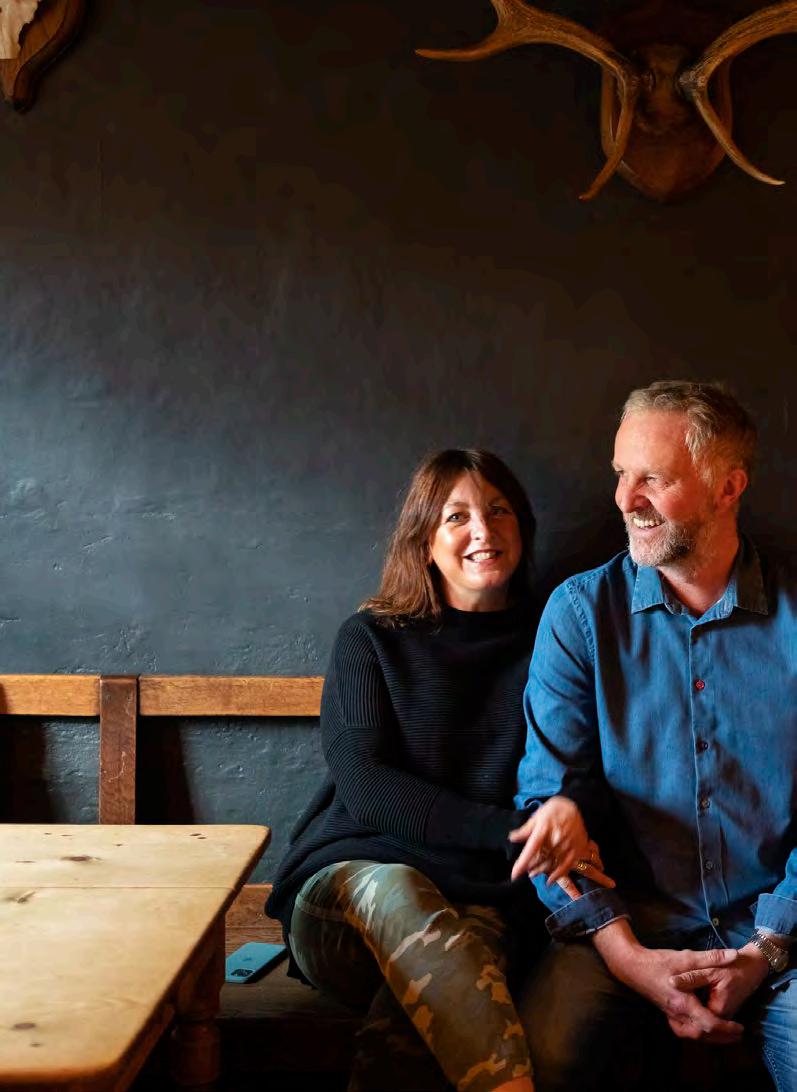
Alstonefield is staggeringly beautiful and so well positioned, up on a limestone plateau above Dovedale. Alstonefield is just off the beaten path and has an air of unspoilt tranquillity. The countryside feels old and untouched and the village still has many of its original features; it’s surrounded by stone walling unique to the White Peak region and the rivers Manifold, and Dove. There’s a spirituality to the place that captivates you, maybe unwittingly! It’s our idyll.

The George has been here for years— indeed my older sister remembers camping here 30 odd years ago, and it has been central to Alstonefield for a long, long time. Safe to say it’s a bit of an institution! It is a Georgian coaching inn, built in 1710 with a beautiful and quirky interior. We have a collection of bank notes adorning the beams that have been collected for aeons in the cosy old bar area, lots of old pictures and wise words scattered across the old stone walls, plus an open fire. Then there’s the restored dining room, with lime plaster, a big log burner and stone-mullioned windows throughout. We think at one point there was a cattle market in what is our kitchen garden, now home to the chickens, ducks and bees!
A constant theme and feedback we get is the relaxed, easy-going and friendly atmosphere we combine with

some seriously special, sophisticated food. It doesn’t feel stuffy or suggest any lofty airs of pretence. We are human, and we really want people to enjoy the experience and feel at home.
We always try to source locally, and grow our own too. Sustainability is key, and keeping our impact on the environment to a minimum is vital. The meat we have is sustainable, and often rare breeds from the Peak District's highwelfare smaller farms, but we try and use local breeds too. I have so many favourite spots in Alstonefield, but the view that still takes my breath away is looking down to Milldale and the Dove Valley— it’s so dramatic and it’s just ten minutes down the lane, across a field. Then climbing to the top of Baley Hill / The Nabs looking back toward Alstonefield and seeing so far around. It’s a 360° view that never fails to delight.


Robert Wood, 63, and his wife, Jo are the owners of Alstonefield Manor Cottages. Visit alstonefieldholidaycottages.com
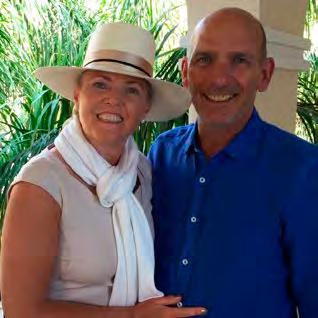
My wife Jo grew up in Alstonefield, but we bought a house in the village about 30 years ago, and then moved to the Manor 20 years ago. So I married the village!
We met in London and Jo introduced me to her home village, and I fell in love with it. However, we moved to Boston Massachusetts and lived in the US for ten years before finally moving back to the UK and Alstonefield. We wanted our
two children, George and Hannah, to have the same experience of village life that Jo had as a little girl.
Alstonefield has a great community spirit and a real cross section of residents, which makes it an interesting place to live. It also has many families who have lived in the village for generations and who still work the farms and land. This keeps it "real" and gives it continuity. So, you will see the cows and sheep being driven through the village and the trailers full of bails at harvest time. Its location is unique, on a

plateau between Dove Dale, Mill Dale, Narrow Dale and the Manifold Valley so as soon as you leave the village you are in spectacular countryside. And because it’s in a National Park there are miles of footpaths.
Although the village is small, it always has something going on—concerts in the village hall, musical or art events in the church. And anyone can join in. The village keeps adapting to change, which keeps the community strong. The village tearoom's closed, but now we have a pop-up cafe in the village hall.
Since the chap could no longer wind the village clock every week, 12 clock winders now take it in turns.
The Manor house was owned by the Harpur Crewe family who owned Calke Abbey, and who were the original Lords of the Manor. It was rebuilt and extended in 1742 when it became the Manor House and it retains many of the original features, so every room has a different feel. From the oak-panelled dining room to the later Regency drawing room or the low-ceiling snug, and gracious Estate Rooms. n
Best known for being one half of hip hop duo Rizzle Kicks, musician Jordan Stephens is also an actor and TV presenter. His debut solo album, Let Me Die Inside You is out now
I’d destroy modern phones. Modern phones are too much. Over the top. They feel necessary now but never were. I think a lot of technology peaked in the Nineties or early Noughties. And since then we’ve just been convinced we need stuff when we don’t. Right? We get tricked into feeling like we’re missing out when there was never an issue [in the first place].
[It’s] the opposite of the phrase, “If it’s not broken don’t fix it.”
Technologically speaking, we’ve been breaking loads of things that have been working fine and then charging people for the updates. I never watched television in my teens and thought, I wish this was more defined. To be honest, I was at peace with a CD Walkman.
And this new era has us hooked. And impatient. And wired. And I feel as though it pulls us from ourselves and our authentic beings and desire to connect.
I think we were happy walking to the shops. Weren’t we?

I’d ban billionaires. Some people have too much money. Genuinely. It’s unnecessary. Do you know there are reasons to believe that the desire for accumulation is not actually an instinctive one? It appears to be mutation. An obsessive need to accumulate. If you replaced money with something else, that accumulation would instantly appear unhealthy. Look at this man who has 2 billion packets of crisps. Is he OK? Why has that woman got three billion leaflets?
Jokes aside, let’s re-engage our sense of community. Maintain the
level of responsibility that would naturally arise with accumulation. We live in a world of empty apartments and unhoused people. That’s not right. That’s all I know.
We’d reconnect with plants. Plants are magic. I don’t say that lightly either. They have incredible healing properties—as we all know. But I worry now, with the imminent virtual abyss that we find ourselves in, that we’ve forgotten. We’ve forgotten that all around us are tools and signs. Maps and guides. Stinging nettles and doc leaves. I’m reading a book called The Secret Life of Plants [by Peter Tompkins and Christopher Bird]. It’s mind-blowing. It catalogues evidence of plants being able to tap into our energy and read our minds. Scientific studies on fungi have revealed natural psychedelic journeys, be it through tree bark, mushrooms or toad poison can shift conscious states and save lives. They remind us that we are genuinely all one of the same and our lives aren’t as weighted in selfobsession as we’re convinced they are. Apparently just looking at a tree calms the nervous system. Plants are gods.
There should be more multicoloured buildings. I’m near positive it’s to do with brick naturally being boring, but we need to liven things up a bit. The western world at least, is desperate for a lick of paint.
Just jazz it all up. It’s bad enough that there are buildings absolutely everywhere. Might as well make them exciting.
All competition should be fair. I worry about our modern values. We appear to be the only species that believes in unfair battle. Bring back duelling. Bring back sorting out issues through competition that can end respectfully. No ganging up. No foul play. Restore honour in surrendering and the acceptance of loss. There’s grace in defeat but only if there’s fairness to begin with. We need to feel part of something bigger than ourselves. Understand that we’re part of bigger stories. And find peace in that realisation. I think everybody has a part to play on this Earth. There should not be single soul on the planet that feels disorientated. We need to restore some balance.
I’d stop people eating with their mouths open. My tyranny would truly begin at this point. I don’t want to see or hear people eating. All people who eat with their mouth open would have to live on Chompy Island until they can prove otherwise. This rule would be fascist, unfair and terrifying.
I don’t know what else to say, I’m just being honest. I am, after all, a petty human being. And perhaps I always will be. Even if I meditate. n

To celebrate the 100th anniversary of Reader’s Digest we’re relaunching our much-loved 100-word-story competition with prizes of up to £1,000 to be won

Our 100-word-story competition is your chance to show the world your story-telling talents. There are three categories—one for adults and two for schools: one for children aged 12–18 and one for children under 12. Your stories should be original, unpublished and exactly 100 words—not a single word
shorter or longer! Entries are now open. The editorial team will pick a shortlist of three in each category and post them online on June 1. You can vote for your favourite, and the one with the most votes will scoop the top prize. Voting will close on May 1 and winners will be published in our September issue.
Visit readersdigest.co.uk/100-word-story-competition to enter


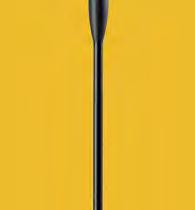









Excellent light, it’s made reading so much easier.
 Mrs Verrell East Sussex
Mrs Verrell East Sussex














































Read in comfort for longer
Do you struggle to see small print and detail, even with reading glasses?
The right light is just as important as having the right lenses - it helps you enjoy cherished hobbies for longer in comfort, without straining to see.
Serious Lights bring daylight indoors. They use bespoke
technology to deliver incredible clarity that lets you lose yourself in your favourite books without experiencing the uncomfortable e ects of eyestrain.



See the di erence with your own eyes and rediscover your love of literature. Enjoy clear detail again
30 day in-home trial
Recommended by over 500 opticians

Compact Light WORTH £150 with any Serious Light order when you use code 100W2, while stocks last FREE








As we continue to celebrate 100 years since Reader’s Digest got its humble start, here's part two of the remarkable story of the man who, with his wife, Lila, built it into a global success
By Charles FergusonTHERE WERE NO CANCELLATIONS AFTER THE FIRST ISSUE. SO THE EDITORS GOT BUSY ON A SECOND. LILA KEPT HER SOCIAL-WORK JOB TO PAY THE RENT. WALLY WENT UPTOWN EACH DAY TO FORAGE THROUGH MAGAZINES IN THE NEW YORK PUBLIC LIBRARY AND THUS AVOIDED HAVING TO BUY THEM. HE CONDENSED ARTICLES THAT ENGAGED HIS MIND.
He wrote them in longhand on yellow sheets of paper, eliminating asides, pruning wordy prose, getting straight to the point.
In September 1922, the Wallaces rented a garage apartment for $25 a month in Pleasantville, New York, the town where they’d been married. Orders kept coming in as Wally kept mailing out promotions. By the end of the magazine’s first year, circulation had increased to 7,000. More working space was needed, so for $10 extra per month the Wallaces rented a pony shed beside the garage. They brought in typewriters and stencilcutting machines, and hired some neighbourhood help.
Wally still wrote his own promotion circulars and letters that were personal in tone. Some envelopes were handwritten. His direct-mail approach established a personal connection, a kind of companionship between editor and reader. The promotion letter you got was from the man who originated and produced the magazine, asking you to subscribe for your own good. Other magazines
launching at about the same time aimed at millions of readers. The upstart Reader’s Digest aimed at the individual—and outsucceeded the whole pack.
When they began to feel prosperous enough, co-editors DeWitt and Lila would go somewhere to escape interruption and, in a seven-to-tenday work binge, put together the next issue. They’d take adjoining hotel rooms, he working in one and giving her a batch of publications to read in the other. To rule out distractions they communicated by notes slipped under the door. He kept all her notes. This one was scribbled on a pad of the St Regis Hotel in New York:
“I’ve covered 12 issues of each of these magazines, darlin’—and I am a tired, baby! Hope there is something useful. Come and kiss me good night.”
Once during those early years after he’d left on a trip, she wrote:
“Make the most of this trip, Sweet, for I am not at all sure I’ll ever be able to let you go away without me again! You looked so sweet and desirable as you drove off that I almost lost
my courage and didn’t keep my promise not to weep a bit.”
Wallace had originally set himself a goal of 5,000 paid readers. That would bring in $15,000 a year—enough, in 1922, to cover costs and provide a comfortable living. They might even be able to travel, taking the issue with them to work on at will. After four years, however, Reader’s Digest circulation had reached 20,000. Then in the next three years it skyrocketed to 216,000.
As the magazine kept growing, the Wallaces began renting whole floors in various Pleasantville office buildings. One day Ralph E Henderson, 26, turned up at the pony shed office looking for an editorial job. Ralph records the DeWitt Wallace who hired him: “He listens far more than he talks. But his quick eyes are the clue to his restlessness, energy, curiosity. All editorial work went on in the living room, where Wally had his desk. There he would read 40 or 50 magazines regularly, select 30-odd articles and condense them with painstaking care. That’s the way it went, straight from the pencilmarked magazine article to the typed yellow sheets for the printer. Every scrap of copy had to flow through his own portable Corona typewriter. In the same room Lila had her piano, which she played often. So the click of the Corona and the notes of “Blue

In 1951, Time magazine featured an eightpage story on the remarkable success of DeWitt and Lila Wallace
Room” sometimes reached the nearby studio office where I worked, in a mingled sonata.”
It is a storybook view: a young couple, not needing to hold hands to be in love, on their way to a stunning success.
When I joined RD in 1930, we were a dozen people in cramped quarters on the top floor of a bank building. Below were train tracks: every hour or so the peaceful atmosphere was disturbed by steam engines roaring past. My job was to help the boss in dealing with writers, drumming up more original articles. While driving
around one Saturday afternoon in 1935, Wally went off the road and damaged his car. The tow-truck operator gave him an earful about other smashups he’d seen, and the bodies dragged out of those wrecks. Mulling this over, the editor decided that if he could make readers see, in grisly detail, the carnage on our highways, it would shock them into better driving habits.
Most people in the publishing world had regarded Wallace as a scissors-and-paste editor, putting out a little reprint magazine. Yet this quiet, obscure fellow had now originated a piece that rocked the nation. Along with envy it raised a suspicion of editorial genius. In succeeding years, original articles became a major component of Reader’s Digest. Stories about the perils of fascism and communism,
WALLACE
He dispatched a young writer named JC Furnas to talk with police, getting graphic eyewitness reports of “worst case” accident scenes. The article that ran in the August 1935 issue was a blockbuster. For all its guts and gore, it had dignity. Five thousand proofs of “—And Sudden Death” were sent out to newspapers and other publications, with permission to reprint, in order to reach as many drivers as possible before the upcoming long weekend. It ran in newspapers in every large US city and in many other publications. It was read and discussed on radio, in schools, churches, lunch clubs. The demand for reprints of the article would continue for two decades. It was without doubt the most widely read article ever published at that time.
the hazards of cigarettes and drugs, exposés of drunken driving and government waste became hallmarks of the magazine’s investigative journalism.
By 1936, RD’s circulation was 1.8 million—the largest ever achieved by a 25-cent magazine (save for Good Housekeeping). With no ad revenue, the “pocket university” had nonetheless netted its husband-andwife owners $418,000 the year before. The man was not only a creative editor, he was apparently a financial wizard too.
Though DeWitt listed Lila’s name ahead of his as editor, she had little interest in editorial work. Yet Lila’s competence in the world of artwork and decor equalled his in the realm of words and ideas. She took on the responsibility of having a new home
built on an estate big enough for a landing field (Wally loved piloting a four-seat plane—which he eventually gave to Canada in support of Britain’s war effort). And when the operation of Reader’s Digest from four rented locations was no longer viable, Lila oversaw construction on new offices on an 80-acre site in the countryside near Pleasantville, starting in 1937. She also took complete charge of the landscaping and interior decoration. Furnishings would include original antiques and works of art.
International editions and other RD products, including books, followed. In 1955, the magazine opened its pages to advertising (but only after polling readers, who agreed with the change). Profits mounted. By 1980, the combined wealth of the Wallaces was reckoned to be half a billion dollars.
Having had no children, the couple had no interest in a dynasty but instead became legendary givers. They gave millions to schools and established a travel-research fund for journalism students. Some $2 million was donated to restore the periodicals room in the New York Public Library, where DeWitt had once copied articles by hand. The library named the room after him.
When, in 1941, the company received $71,040 in profit after publishing an anthology, Wally divided the money among 348 employees. Their gratitude gave him a

Wally published several pieces about Outward Bound, an adventurebased education course that puts young people through a programme of outdoor activities to gain selfconfidence. Once at a meeting in New For decades, RD’s world headquarters were located near Pleasantville, New York
heartening awareness of his influence, and he continued the habit for as long as he lived. In 1976, for example, he rose at a company party and said: “Lila and I hate to act impulsively and unilaterally without waiting for the next board of directors meeting. But…” He then gave a surprise raise to all 3,300 employees: 11 per cent for those making up to $40,000 a year, and eight per cent for those making more.

York, DeWitt slipped an envelope into the pocket of Joshua Miner, president of Outward Bound, USA. “Inside was a letter and a cheque for 1 million dollars,” Miner reports.
Lila became best known as a patron of the arts. From a fund she established, New York’s Metropolitan Museum of Art received well over $50 million. She made arrangements for fresh flowers to be kept in the museum’s great hall, in perpetuity— one instance of her wish to match
The Wallaces in front of Marc Chagall’s The Three Candles, which was part of their extensive art collection
nature’s beauty with art. Another was the restoration of painter Claude Monet’s studio and gardens in Giverny, France.
For all his wealth, achievement, and power, DeWitt Wallace saw himself as an average man. But he stood out for his intense, sustained curiosity, plus an unequalled capacity for work. He had mountains of material to deal with. Reading with single-minded absorption, quick with decisions, he managed to clear his desk and always be on schedule.
Wherever he travelled, he brought home postcards to use at Christmas. He would hand-address each one and write a cordial personal message. The cards went to writers, agents, publishers, and some staff— complimenting each on a particular achievement in the past year that had helped make Reader’s Digest a success. It was a practice he followed for decades. He timed himself with a stopwatch and set an hourly standard to compete against. One holiday season he sent out 800 cards!
Wally continued to believe the road to human betterment stretched into the future. This conviction made many editorial decisions for him, enabling him to respond
with spontaneity and honesty. Information set forth in cogent style that advanced people’s hopes and widened horizons—this is what stirred him. “Quotable,” “memorable,” “applicable” were words he lived by. In starting up his little magazine he had made no calculations or surveys of what the public wanted to read. He knew only what he wanted to read. It was understood that the views expressed in RD, large or small, pretty much represented Wallace’s.
In 1973, at the age of 83, Wally and Lila officially retired. Wallace remained fully in touch, though was seen less often at headquarters. When, in 1976, a newspaper referred to “the late DeWitt Wallace,” he sent his staff a memo: “Here Lila and I are in the Glorious ‘Out Yonder,’ looking over your shoulder and applauding the work you are doing as we did in our previous incarnation.”
In 1978, the Christmas card was not hand-signed. DeWitt had typed: “My close-up vision has deteriorated in recent months. I have difficulty reading my own handwriting. Hence I refrain from inflicting upon you a personal note, something I enjoyed doing in the past.” The editor who believed all problems are solvable had finally encountered some he could do nothing about.
There were times still when the young man reappeared in the old. When he was 88, he got Josh Miner of Outward Bound to help him
set up a whitewater expedition on the Green and Colorado rivers. He commandeered a party of men in their seventies to run the rapids with him.
Such spurts of energy, however, were increasingly rare, and on March 30, 1981, DeWitt died at age 91. Lila lived another three years.
During Wally’s last years I felt a kind of homesickness for the past when everything still lay ahead. I kept remembering all those afternoons when he and I would leave the office above the train tracks and drive out to the country where the new office building was going up. With each visit his original indifference turned into an almost juvenile pride in the construction.
Soon after his death I came across a fragment of verse from Japan, a haiku translated. It spoke to me as music does and it said what I could not:
“A trill descending…
But look! The skylark who sings
That song has vanished.”
Grief is a poor afterthought, and frailty does not mark the end. Millions of people around the world continue to imbibe inspiration from the magazine DeWitt Wallace created. The skylark has vanished, but not the song. n
This article was originally published in March 1987

The most interesting thing about cars isn’t the car at all, says motoring writer, Simon Heptinstall
The more nerdy car-spotters among you may be dismayed to know that the most interesting thing about a car is not its horsepower nor the cubic capacity of its boot.
It’s not the top speed either. Nor is it the price or the colour.
After years of professionally writing about cars I’ve discovered that the most interesting thing about cars is none of those dry specifications. It’s their drivers.
For example, while enthusiasts drooled about the Ultimate Aero supercar setting a new world production car speed record of 256mph (412kph) in 2006—I was more excited that the driver was an unheard of 71-year-old pensioner roped in as a test pilot.
And when motoring historians carefully record the date of the world’s first parking meter in Oklahoma in 1935, I’d rather hear about the first driver arrested for non-payment
shortly after it was installed… it was the local pastor, Rev C H North.
The most fascinating fact about BMW? Nothing to do with "the ultimate driving machines." For me it’s that around 53,000 British people google what BMW stands for every year (It’s Bayerische Motoren Werke).
So in between writing the usual roadtests, new car reports and mechanical specifications for publications like Autocar and Top Gear, I’ve privately collected a massive archive of weird and wonderful human stories lurking behind the cars.
I’ve started writing this treasure trove of extraordinary automotive anecdotes into books (see end of article) but the collection grows faster than I can churn them out.
Am I the only one to think the motorists make better stories than their motors? Here’s a chance to make your own mind up—with 12 favourite stories from my collection:
In 1896 the great inventive engineer Henry Ford finished building his first car, called The Quadricycle, in a small shed behind his Detroit house. He was to become one of the world’s most successful businessmen—but this time he had badly miscalculated. The completed Quadricycle wouldn’t fit out through the workshop door. He’d built it bigger than the width of the door. Henry had to resort to using an axe and brute force to chop out the workshop’s doorframe and knock out the bricks around the door to make the opening wider. Then at last he could get his pioneering creation out for its first ever drive.

Millionaire rock star Noel Gallagher forgot he’d bought a pristine classic car for £110,000. The former Oasis guitarist was puzzled when a beautifully restored 1967 Jaguar Mark II arrived at his house on a delivery truck. It turned out he had ordered it spontaneously two years previously. Since then a specialist company had been painstakingly restoring it for him. At the time he ordered it he had hoped to learn to drive—but never got round it. He forgot the whole thing. So he has never driven the classic car he forgot he bought… and it still sits unused in his garage.



3Bowler-hatted businessman and inventor Elwood Haynes astonished one of his earliest customers by delivering a pioneering horseless carriage personally in 1898. Elwood drove the spartan open-topped car all the way from his Indiana workshop to the wealthy doctor’s home in New York City. It was the first 1,000-mile car journey ever completed in the United States… and it took over a month (the car he delivered became known as "The Pioneer". It was later donated to the Smithsonian museum and appeared on a US postage stamp in 1995).


German racing driver Ernst Loof holds a Formula One record that is unlikely to be ever broken. He had a career as a successful car and bike designer. His racing career was less triumphant however. Loof competed in just one F1 race: the 1953 German Grand Prix at the Nürburgring. Loof lined up on the grid with all the other contestants in a Veritas racing car that he had helped to design. When the race started all the cars pulled away but Loof’s car immediately suffered a fuel pump failure. The car stopped after just six feet (two meters) scoring no points at all… giving Loof the world’s shortestand-least-successful-ever F1 career.
According to the Guinness Book of Records the world’s hairiest car is a Fiat 500 owned by Maria Mugno of Salerno in Italy. The Italian hairdresser has spent hundreds of hours importing bags of human hair from India, because she claims the hair is stronger from the subcontinent than Europe. She then glues and stitches the locks onto every surface of the car, inside and out, including the steering wheel, dashboard and doors. Her furry Fiat is still roadlegal however and is a familiar sight as she drives it around Salerno.

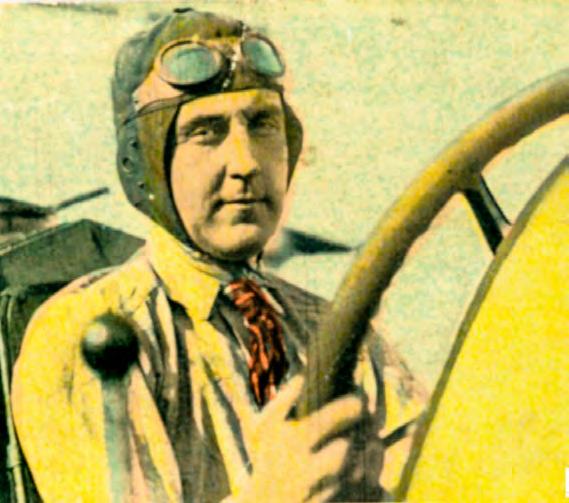
In the inaugural Indy 500 race of 1911, all but one of the 40 entrants carried a driver plus an observer, whose job was to warn the driver about other cars coming up behind. It was the normal arrangement in races of that era. But in the 40th car was Ray Harroun, who took the outrageously risky decision to drive alone. Harroun drove a bright yellow car he had built himself and experimented with an eight-by-threeinch mirror on a stand fixed to his dashboard instead of an observer. It is believed to be the first use of a rear-view mirror. Being one person lighter and more aerodynamic, Harroun’s car easily won the race by more than half a mile.
In 2020 Nigel Wright was fined £100 for stopping (for 35 seconds) outside East Midlands airport car park while he put a token in the machine and waited for the barrier to rise to let him in. Officials claimed that the 34-year-old English teacher was in a "no stopping zone."

The driver of a Citroen Saxo who smashed into a parked car at full speed… while trying to catch a spider running around inside his car. Both cars were written off but the driver escaped injury in the smash on the A50 in Derbyshire. He did get reported for driving without due care and attention. The spider’s fate is unknown.



At the end of an epic 100-mile two-car racing duel at Brooklands in 1924, swashbuckling gentleman racer
Captain John Duff had not only lost the race—but his brakes failed. His Blitzen Benz—with an enormous 21-litre engine—crossed the finish line at over 100mph with Duff desperately trying everything he could to slow down. He managed to continue steering at full speed but careered right off the circuit. The Benz hurtled over the surrounding grass embankments. Duff crashed through trees trying to slow his momentum. He then burst out in the open road beyond the circuit. Eventually he stopped—by running into telegraph pole far from the racetrack. Duff was unhurt… and later went on to become a Hollywood stunt double for Gary Cooper. 9


Unlucky van driver Ben Baron from Lancashire slowly drove past the speed camera where he had been previously snapped over the limit. That incident had resulted in a fixed penalty fine. Ben was determined he wasn’t going to get caught again and he carefully kept under the speed limit. As he passed the camera, however, he couldn’t stop himself making a rude gesture at the hated device… with both hands.
Unfortunately for Ben, this hands-offthe-wheel gesture was caught on film by the same camera. Within days he received another prosecution by post, this time for “failing to keep proper control of his van”.
A young Chinese driver accidentally drove onto a narrow pier and swerved off the side into an icy river less than two minutes after passing his driving test. The incident was caught on camera and the video (perhaps unfortunately for the driver) was posted on YouTube. The driver was saved but suffered a dislocated shoulder. The car was fished out by crane. Later the young "Mr Zhang" from Guizhou province told police he was distracted by texts from friends asking whether he’d passed.

Lee Redmond of Salt Lake City, Utah, USA held the Guinness World Record for the longest fingernails. Over 30 years they grew to a curly 30 inches (76cm) long. Sadly in 2009 she had a minor traffic accident, fell out of her car… and all the nails broke off.




 Dr David Douglas
Dr David Douglas
Forget Indiana Jones—the real action heroes of history were a group of Scottish botanists





When quizzed by The New York Times about how long she planned to stay in the music business, Taylor Swift replied, "When I’m in my fifties, I kind of think I’ll want to be in a garden." Most people think about gardens in a similar way to Taylor Swift. Somewhere to escape the slings and arrows of everyday life. Havens of tranquility where danger and threat have no place.
But these fragrant sanctuaries conceal exhilarating secrets. Take a seat in an average garden, and you are likely to find yourself surrounded by monuments to deadly peril and nerve-shredding courage. Because the chances are that the commonplace plants around you—camellias, jasmines, lupins—will be descended from blooms once considered so
exotic that brave adventurers would risk, and sometimes forfeit, their lives to find them.
Plant hunters have been around since time immemorial—there are Ancient Egyptian annals detailing a botanical expedition dispatched by Queen Hatshepsut to Somalia to bring back myrrh trees. But the profession really hit its stride in Victorian Britain, when new technology in glass manufacture and coal-fired boilers led to the creation of elaborate, heated greenhouses. Ally this development with the country’s burgeoning wealth, and thirst for
exploration, and a lucrative market for exotic plants was born.
In order to meet unprecedented demand, nursery owners and private collectors invested huge sums of money sending people to remote parts of the world in search of rare plants. And not just anyone would do—the job required unlimited courage, resourcefulness and a high level of botanical knowledge. An unusual combination of brain and brawn.
David Douglas had both in spades. Born in Perthshire in 1799, the young Douglas found himself in constant trouble at school. An incorrigible truant, he spent his days roaming the Scottish hills in search of owlets and eaglets to keep as pets. His preference for the natural world over the schoolroom saw him apprenticed to a local nursery aged 11; Douglas excelled at the work, quickly advancing to a position at the Botanic Gardens in Glasgow. There he met William Hooker, future Director of Kew Gardens, who, recognising something in the young man, invited him to join him on walking tours of the Highlands to gather material for his book, Flora Scotica. When the Horticultural Society—a group of wealthy botanists who first met above Hatchards bookshop in Piccadilly—began looking for a botanical collector to provide plants for their newly leased gardens in Chiswick, Hooker had no hesitation

"Douglas was famed for keeping a golden eagle as a pet, shooting dead a grizzly bear and almost drowning in a whirlpool"


in recommending Douglas.
Initially, the Society had hoped to dispatch Douglas to China, but political turbulence there meant that they opted for a North American expedition instead. Arriving in New York in August 1823, Douglas took to the work and the country like a duck to water, completing three separate expeditions, which resulted in the introduction of over 200 species to Britain, such as the garden lupin, the Pacific aster and the towering Douglas fir, which bears his name.
During his travels, Douglas quickly developed a reputation as a larger-than-life character, famed for keeping a golden eagle as a pet (until it accidentally throttled itself on its restraining cords), shooting dead a grizzly bear when it attacked his camp
in Oregon, and almost drowning in a whirlpool on the Fraser River.
Such colourful adventures made him the toast of London society, but Douglas found it difficult to settle back into ordinary life, and embarked on what was to become his final expedition, arriving in Hawaii in late 1833. Permanently snow-blinded in one eye after an earlier trek to collect paeonies in the Blue Mountains, Douglas stumbled into a cattle pit on the sides of the Mauna Kea volcano. An angry bull awaited him, and he was found gored and trampled to death on July 12, 1834.
Almost a decade later, the Horticultural Society finally found a hardy Scot to send to China. At the time of his commission, the
29-year-old Robert Fortune was working as Superintendent of the Society’s Hothouse Department in Chiswick. Setting off for Hong Kong on February 26, 1843, Fortune proved an inspired choice, deploying a devastating mix of guile and charm to acquire a dazzling array of Chinese exotics for the Society— camellias and jasmines; forsythias and mahonias. On one occasion, Fortune even disguised himself as a Chinese mandarin in order to enter the forbidden city of Suzhou, where he procured a double yellow rose and a gardenia with sumptuous white blossoms.
But Fortune’s physical courage more than matched his cunning. Stricken with fever aboard a cargo junk bound for Ningbo, he was roused from his sickbed with the news that no less than five pirate ships were bearing down on their boat. Dusting off the 12-bore shotgun that the Society had provided, Fortune scrambled up onto deck.
The pirates had guns of their own, and were already firing at the junk, but Fortune held his nerve, lying flat on the deck until the nearest pirate ship was just 20 yards away. Then, springing to his feet, he let off both barrels, so surprising the pirates that they turned tail and fled.
Fortune’s expedition for the Horticultural Society was deemed so successful that his services as a plant hunter were immediately in
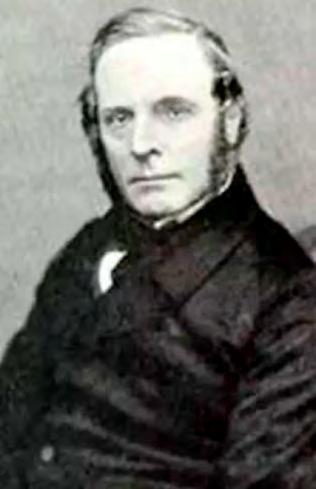

"Dusting off the 12-bore shotgun that the Society had provided, Fortune scrambled up onto deck"

"Forrest spent nine days and nights trapped in the mekong valley as the lamas and their mastiffs tried to hunt him down"
demand. His next employer was none other than the East India Company, who tasked him with the job of smuggling tea seedlings out of China and into India. Donning another disguise, Fortune succeeded in his mission, and the Indian tea trade was launched, now the second largest in the world. But of all the plant hunters of the era, perhaps none endured greater hardship than George Forrest.

Another Scotsman, George Forrest was employed by the herbarium of the Royal Botanic Garden in Edinburgh when he was put in touch with Arthur Bulley, a wealthy Liverpool merchant with ambitions of opening a plant nursery. "He is a strongly built fellow," Bulley was told by the Keeper of the Garden in a letter of April 28, 1904, "and seems to me to be of the right grit for a collector." The description proved accurate, and the 31-year-old Forrest showed himself to be a born plant hunter, departing that year for the Himalayas on Bulley’s behalf, and soon despatching crates of seeds back to England—rhododendrons, gentians, primulas, meconopsis.
But Forrest’s plant-hunting career was almost cut short in the summer of 1905. Lodging at an isolated French Jesuit mission in the foothills of the Himalayas, he had no concept of the unrest being stirred up by the British invasion of the Tibetan city of Lhasa. When word filtered through that
a heavily-armed militia of Tibetan monks, (known as lamas), was on its way to attack the Mission, Forrest and his fellow residents fled for the hills. The lamas soon caught them up, and a massacre ensued.
"Our little band," Forrest wrote, "numbering about 80, were picked off one by one, or captured, only 14 escaping." Forrest spent nine days and nights trapped in a four-mile stretch of the Mekong valley as the lamas and their mastiffs tried to hunt him down. Eventually, hallucinating with hunger, his hat pierced by poisoned arrows and one foot impaled on a fire-hardened bamboo spike, Forrest fell into the company of some friendly villagers, who helped him over the snowline to safety.
The adventures of Douglas, Fortune and Forrest seem to belong to a different world, and these days, men who were once regarded as intrepid heroes are seen by many as ruthless plunderers; even pirates. So what of plant hunting today?
According to Renata Borosova, senior curator-botanist at Kew Gardens, the profession is alive and well, but its focus now is on partnership and conservation; on ecology rather than profit.
"In-country partners typically invite botanists to join expeditions,’ Renata tells me. "We undertake botanical surveys, often describing new species in the process, and work with

local policy makers on establishing protected areas where endangered species can be conserved in situ."
But one thing that hasn’t changed is the potential for thrills and adventure. In the course of her work, Renata has been attacked by leeches in Yunnan, kept vigil for icebergs aboard a boat on the South Atlantic, and used broom-handles to protect herself from aggressive seals in South Georgia—all in the name of plant hunting.
The inescapable conclusion is that Taylor Swift should reconsider her retirement plans.
Horticulture is not as sedate as it seems… n
The Plant Hunter by T L Mogford is out now (Welbeck, £12.99 hardback)


The bright buildings of Curaçao's capital Willemstad date back to Dutch colonial times

Flamingos, beaches, a rich and sometimes dark history—there’s more to this Caribbean island than a colourful liqueur
By Victoria De Silverio from hemispheresI’m 12 degrees north of the equator and about 40 miles off the coast of Venezuela on Curaçao, a flat stretch of an island in the Caribbean Sea, so I shouldn’t be surprised how hot it is. Curaçao feels like a secret paradise, where sunset-pink flamingos feed year-round in salt pans, where dozens of coral beaches beckon with ferociously bright-blue water, and where locals shoot off a rainbow of fireworks every Thursday night, simply because it’s almost the weekend.
It’s autumn, and the trade winds have caused the divi-divis—stubby trees with dry, mangled trunks and flamboyant green tufts on top—to lean cartoonishly. But the winds are on siesta today, so I splash on sunscreen and prepare to explore the historic Unesco-listed capital city, Willemstad.
Founded by the Dutch West India Company in 1634, Willemstad has always been, by some measure, a cosmopolitan trading port. It was the capital of the former Netherlands Antilles until 2010, when Curaçao became a country within the Kingdom of the Netherlands.
After going through hard times and neglect, Willemstad is enjoying a massive rejuvenation, with artists and entrepreneurs helping to create a new spirit of civic pride. Today the city of 125,000 pulsates with a
mishmash of 50 cultures and three official languages: Dutch, English, and the island’s very own Creole tongue, Papiamentu.
I check out of my hotel in the Pietermaai district, where slave merchants, bankers, and ship captains built ornate mansions in the 18th and 19th centuries. Many of these buildings have been restored into trendy hotels and restaurants with airy courtyards. Their playfully painted exteriors are like flavours— lemon, lime, blueberry—and the fancy white trim like icing.
Inside the raspberry one is Beans, a coffee shop with original ceiling frescoes and mosaic floors. On the seaside terrace, I have coffee and a warm codfish pastechi (like a flaky empanada) before meeting my friend Damaris, who was born on the island and works at Kas di Pal’i Maishi, a museum that focuses on how the Afro-Curaçaoans adapted post-slavery.
Our first destination is Scharloo, a quiet neighbourhood that still feels like a village thanks to Street Art Skalo, an organisation that has enlisted artists to paint building facades and walls. Driving along the main drag, Scharlooweg, Damaris calls out to a guy in paintsplattered shorts and a pink polo shirt, “ Bon dia !”
He is Francis Sling, one of the island’s biggest art stars. Seventeen



of his paintings hang at The Curaçao House in The Hague, Netherlands, and his Three O’Clock Romance—a massive mural of two birds on a branch—is just around the corner from where we are.
We join Sling in his studio, where he is cutting up a colourful artwork to sell in pieces. “Everybody is asking for postcards,” he says, “but these are like pieces of a puzzle.” I buy a pair of earrings featuring mismatched bits of paint, and we let him get back to work.
We drive over the Queen Juliana Bridge—which, at 56 metres, is the Caribbean’s tallest—to Otrobanda, where many freed slaves settled in the mid-1800s, then head to the Kura Hulanda Village & Spa.
Magnificently preserved, the village is a stark reminder of the island’s dark past, when Willemstad was a major stop on the trans-Atlantic slave-trade route. On the site of a former slavemerchant’s home is the Museum
Kura Hulanda, which holds the largest collection of African artefacts in the Caribbean. In the courtyard, people were once sold to the highest bidder; two pillars support a bell used to summon slaves to work and a crossbeam to tie them for beatings. It’s a stark but moving time capsule.
As the sun starts to set, we cross Sint Anna Bay on the pedestrian Queen Emma Bridge. Ahead of us is Curaçao’s most iconic vista: the candycoloured townhouses along Handelskade, in Punda district.

As the story goes, one of the island’s governors in the 1800s complained that the sun reflecting off the white buildings gave him migraines, so he demanded they be painted in bright colours.
“Years after he died, it came out that he owned the factory that made the paint,” Damaris tells me with a laugh.
It’s my luck it’s Thursday, the night when everyone comes out for Punda Vibes. On every corner, there are artists and craftspeople displaying their work or bands playing. The different tempos mingle with multiple languages.
We pass the imposing Mikvé Israel-Emanuel Synagogue; built in 1732, it’s the oldest synagogue in continuous use in the Western Hemisphere. Turning the corner, we see folk dancers in orange costumes. We take a seat at the La Bohème café
murals
for a better view and some chickencurry arepas, a sort of pancake. When the music and dancing stop, another group starts singing. It’s someone’s birthday, and they’re belting out the verses in Papiamentu, Dutch, Spanish, and English.
“Here, we go really long with the birthday song,” says Damaris. When the singing is over, the clapping is overpowered by the sound of fireworks on the harbour. We toast to good vibes.
Next day I make my way from my lodgings on the east side—a salt plantation turned boutique hotel—to Eric’s ATV Adventures for off-road quad-biking into the desert along
the north coast. I notice that many of my fellow riders are tricked out in pro-looking biker outfits and tattoos, which makes me wonder if I need to learn how to do this. Leo, our guide, doesn’t calm my nerves: “There are 18 of you,” he says, “and I want 18 to come back.”
Along the craggy paths I learn how to turn, allowing me to focus on the windswept cacti and acacia bushes. Our convoy rolls past an ostrich farm and into an aloe-vera plantation. Rows of spiny plants are harvested for the nutrient-rich gel that is made into skin-care ointments and wellness elixirs.
When we reach the coast, rolling
waves are crashing against slabs of lava rock. As the spray cools my toasted arms, Leo offers a history lesson. “Why is Curaçao called Curaçao?” he asks. Turns out there are a few possibilities.
Leo’s favourite? “When soldiers and slaves came here after being out to sea for a long time, they were sick with scurvy. By some miracle they were healed by eating the Laraha oranges, which were very bitter but filled with vitamin C. So from the Spanish word for healing, cura, we have ‘Curaçao'" (another explanation: the name derives from Queracao, the word the island’s Indigenous inhabitants used to identify themselves).
Hoping for a sweet-tasting reminder of home, Spanish settlers brought Valencia orange seeds to Curaçao, but the island’s scorching sun and arid climate produced green and bitter fruit. In 1896, Edgar Senior and Haim Mendes Chumaceiro created an aperitif in their Willemstad pharmacy using Valencia orange peels that had been dried under the sun for five days.

The liqueur’s different colours, including a striking shade of deep blue, were created with food colouring. The drink has endured ever since.
I say goodbye to the convoy and drive down the coast to Kas di Piskado Purunchi, a family restaurant in a fisherman’s house. Anthony, the son, leads me through the kitchen to a dock–cum–dining room over the water. Mom Gina tends to the tables, hugging guests and laughing as if this were a family reunion. Dad Calvin leans over the side of the dock to grab a wahoo from a fisherman in a skiff. Within seconds, Calvin is cleaning and filleting the blue fish.
It’s delicious. When I ask Anthony what’s in the creamy red sauce that comes with the

homemade funchi (a kind of polenta), he smiles. “That’s Grandma’s sauce, a little bit of a secret.”
After a sunset hike, I drive a few minutes to Zest Beach Café, a stylish spot with picnic tables on Jan Thiel Beach. Burying my feet in the sand, I have a glass of red wine and a plate of grilled tiger shrimp doused with yet another delicious sauce. The waiter tells me it’s a mix of minced onions, an Indonesian spicy relish called sambal (of course, Indonesia was once a Dutch colony), and “lots of butter—the chef is French.”
I sponge up every drop with grilled toast, and then walk over to the shore for a swim under the stars.
The next morning I’m driving with Damaris to Westpunt, the island’s scenic western side, which is home to its prettiest, most undeveloped beaches. Getting there is easy: one dusty two-lane road runs down the
centre of the 40-mile-long island, through sun-baked flats and over gentle hills. After 30 minutes, we stop to admire a colony of flamingos in a small lagoon. “All chicks are born white,” Damaris says, “and it’s an act of love when they get their colour. As their mothers feed them, the babies gradually turn pink, and the mothers less pink.”
At Playa Porto Mari, we swim, then continue beach-hopping. At each one—Lagun, Klein Knip, Grote Knip—there are palm-thatch umbrellas, snack trucks, and men at card tables playing dominoes.
We reach Playa Piskado, where I’ve set up an unusual snorkelling adventure on something called a Seabob. I spot a man with a bale of a beard coming toward me. He introduces himself as Andy and helps me put on my mask and shows me the controls of the James Bond–style gizmo. It looks like a miniature jet-ski,
although all I have to do is hold on; its top speed is nine miles per hour, and if you point its nose down, you can reach a depth of nearly two metres.
“Have you ever seen garden eels?” Andy asks. “Follow me!” We zip across the cove, and when he points down, I dive to see hundreds of long, brown, worm-like strands poking out of the sand. The moment we get close, they vanish. After that, we pull up alongside sea turtles and then swim through a dense cloud of hundreds of fish.
Back on land, Damaris and I appease our growling stomachs with a visit to Jaanchie’s, off Westpunt’s main drag. Two generations of the namesake owner’s family have been serving local dishes here since 1936, inside a bright orange ranch-style home wrapped in red bougainvillea.
Jaanchie, a distinguished man in a crisp white guayabera shirt (iconic across Latin America and the Caribbean), pulls up a chair and recites the menu. “Everything is possible—also goat or beef stew—and why not try the iguana? You have to be careful. You never know when the iguana starts to work.”
Damaris whispers, “People say it’s natural Viagra.”
A plate of curried “iguana bites” appears among the dishes we order. I try a sliver to show Jaanchie I’m game. He answers with a wink.
After lunch, I part with Damaris and hit the road to Playa Santa Cruz
to see the legendary Captain Goodlife about a boat ride. The salty captain, aka Henry “Juni” Obersi, greets me wearing groovy 1970s eyeglasses and a floral shirt, tells me I’m late, and offers me a hug and a beer. With that, we scurry off to the boat with three of his kids.
We stop a handful of times, once to snorkel over a freighter the captain sank more than 20 years ago; the shipwreck is now a bustling metropolis for hungry fish. Worth the price of admission alone is its famous Blue Room. I hold my breath and dive under an extended rock shelf to reach the underwater cave. Inside, the sunlight passes through the clear water, illuminating the cavern with a surreal blue light.
It’s late by the time I make it back to the other side of the island, so I stop at a roadside sandwich truck, an essential component of the Curaçao lifestyle, which typically includes late-night partying and, of course, eating.
I go all in with the barbecue ribs and fries. Sitting there among the jovial revellers, I remember something Damaris told me: “We celebrate the most random things so that we have an excuse to get together and barbecue. But as soon as the food is done—party over.” At that, I wipe my hands and head for one last swim. n
My husband, son, one of my daughters and I set off for a holiday in Scotland one promising May morning. I had booked us into a holiday cottage on the southern side of Loch Ness, at a place called Torness. We learned later that the road that took us there was built by General Wade in 1732 to assist soldiers sent there to help to control the clans.
Our cottage was not a disappointment, with white walls and lovely wooden latched doors. Discussing our plans, we all decided it would be a great adventure to drive to John O’Groats to catch a ferry to the Orkney Islands. Getting up at about 4.30am we had our breakfast and set off. We arrived in good time to catch our boat at 9am. We sat on the top deck to soak in the fresh, salty air, and all felt very excited. On arrival at the first island, we


were met by a coach which drove us across the Churchill Barriers that link all the islands. These barriers were built by Italian prisoners of war in the Second World War, who resided on a small uninhabited island.
On arrival at the capital, Kirkwall, we had lunch and visited the Cathedral of St Magnus, built in 1137 by the Viking Earl Rognwald in



honour of his uncle, who had been martyred on Orkney. This cathedral is the most northerly in Britain. We then went on to Skara Brae, a wonderful Neolithic Settlement on the Bay of Skaill. The sand had been eroded over many years, and uncovered this gem, which was uncannily well-preserved. It was hard to realise that as long ago as that, they had what we would recognise as a dressing table (made of stone slabs) complete with jewellery. We spent a long time there, soaking in the wonder of it. There was more to come though, as we arrived at another Neolithic structure of the Rings of Brodgar which is thought to have been constructed in the third millennium BC. Our last ancient structure was the wonderful Maeshowe—a huge grass mound covering a burial chambered cairn, estimated to be erected around 2800BC, amazingly.
On way to catch our return ferry, we stopped off at the Italian Chapel, a Roman Catholic place of worship that the Italian prisoners built on their then uninhabited island. We were the only people to stay on the top deck on our return journey, braving the cold winds, as we wanted to keep the magic with us as long as we could. It was a day none of us will ever forget. n
Tell us about your favourite holiday (send a photo too) and if we print it, we’ll pay £50. Email excerpts@readersdigest.co.uk
Ride along Line 1 of the Madrid Metro and, between Iglesia and Bilbao, you might glimpse an empty platform as the train slows slightly. Not only that, but there’s the accompanying sense of looking through a timewarp—such is the vintage billboards and antique furniture briefly on show.
This is—or was—Chamberí, which became one of the city’s first eight stations when inaugurated in 1919. Five decades later, with trains

lengthening and platforms needing to follow suit, it was deemed more profitable to abandon Chamberí. That saw it bricked up in 1966—and most of its historic features were unwittingly preserved.
It’s now possible to visit, and to enjoy a window into the past. Accessed from Plaza de Chamberí, the station opens on Fridays (4-8pm), Saturdays (10am to 2pm; 4-8pm) and Sundays (10am to 2pm). Entry is free on 40-minute tours
(in Spanish), but you must book ahead. Special facilities are available for anyone with disabilities.
Descend, and you’ll see how prolific Madrid architect Antonio Palacios aimed to persuade a then-reluctant public into using this strange new subterranean world. His extensive usage of cheery, colourful materials— white bevelled tiles or cobalt, Sevillianstyle ceramic versions—accompany a large ticket-hall skylight. Those enclose



beautiful, 1920s-style advertising posters hanging.
In 1922, Palacios also designed the Pacifico power plant three miles away. Together with Chamberí and its ticket hall, this plant forms an attraction collectively known as Andén (or Platform) 0. However, it’s entirely possible to solely visit Chamberí if preferred. n
By Richard Mellor
Andre Rieu is the king of the waltz and one of the best-loved personalities in popular music.
is his latest CD, which includes a bonus DVD and as always features his Johann Strauss Orchestra. It´s a wonderful and emotional ode to joy that celebrates happiness, love and a return to life as we knew it. The 19-track CD contains many timeless favourites including, You Are My Sunshine, Can´t Help Falling In Love, La Bamba and Valencia. The bonus 12-track DVD contains such classics as Carnaval de Venice, Singing In The Rain, When I´m 64 and the medley Adieu (Around the World).
Readers Digest readers can now own this fabulous CD/DVD set, which would also make an ideal gift for a friend or loved one, at the special price of just £12:99 including p&p.
To order your copy of this marvellous new CD/DVD, go to music2you.co.uk/happy
Buy now at music2you.co.uk/happy



I know we all likely spend too much time on our phones as it is, but these apps are worth exploring. From budgeting tools to sourcing free food, they’ll all help you manage, make or save money. Obviously there are many more you could benefit from, so make sure you also download the apps for any service or business you regularly use to see if they have extra features
If you don’t mind forgoing access to a bricks and mortar bank branch, then you should try the latest generation of banks that are apponly. These make all the day-to-day basics very simple, and have a number of innovations that the high street banks are desperately trying to mimic. My pick of these is Starling Bank, though Monzo is worth a look too.
If you have multiple current accounts and credit cards then you can see all your balances in one place via MoneyDashboard. This can also help you keep track of spending, as well as set budgets and view upcoming regular payments.
MoneyDashboard

Keeping on top of your savings
Chip is a smart app that analyses your income and outgoings (via your bank account) to see if you can afford to put extra into savings. If you can, it’ll automatically move some cash over to a separate pot, which offers a competitive interest rate on top. You’ll want to opt for the free ChipLite tier to avoid a monthly charge.
Curve is different to the digital banks and money management apps— though you do require the app to get access. Once you’ve signed up you’ll be sent a Curve debit card which you can then connect to all your other Visa and Mastercard cards. When you pay with Curve you can then choose which linked card is charged, and you can do this up to 30 days after the transaction. Again, the free option is best for most.
Many phones will now let you add your different loyalty cards to the inbuilt wallet, but it won’t work for all, which is where Stocard comes into play. You can add everything from your Clubcard and Nectar cards through to your library membership and any other card that has a barcode. Once it’s added you can clear out your purse and flash the app instead.

Three, Vodafone and O2 all give customers discounts and freebies via their own loyalty apps. My pick is O2 Priority—in part because it’s also open to Virgin Media customers, but also because it’s possible to get a Pay-as-you-go SIM for £10 and get access for six months. Recent freebies have included brands such as McDonalds, Caffe Nero, Odeon and Greggs.
The Meerkat app, from Compare the Market, offers 2-4-1 cinema tickets every Tuesday or Wednesday and a similar deal on meals out. You do have to purchase an insurance policy from them to get access, but there’s a simple workaround where you buy a
one-day UK travel insurance policy for £1 to qualify.
West End shows are often available on offer from the TodayTix app, including daily lotteries for cheap tickets to in-demand shows.
If you want to check competitor prices or just see how the price you’re seeing compares to recent months then enter the product into PriceSpy—or just scan the barcode.
Download Field Agent to earn a little extra cash from completing simple tasks and providing feedback. Often you’ll need to take photos of a
supermarket display, or talk to staff about a product in a shop— anonymously of course.
If you’re on one of the major mobile networks, then Airtime Rewards is a must. You need to scan your Visa and Mastercard debit and credit cards to connect them, and when you next use one of those at participating retailers such as Boots, Asda and Primark you’ll earn cashback to put towards your mobile bill.
Searching supermarket discounts
Try Shopmium to earn money back on purchases at the supermarket. The product range can vary, but it’s often a good opportunity to try something new for less. You need to scan your receipt and the barcode to get the refund.
I’m not always keen on questionnaire apps—you often get screened out before you earn any money. But UserTesting is a little more robust. You provide feedback on websites, apps and more, and get paid in return for your time.
Saving on parking charges
Often parking your car in a city centre involves going to a pricey multistory or endlessly driving around looking for a space on a side street. Well you can avoid this with
AppyParking which will tell you the location and cost of parking depending on the time you’ll arrive and the duration you’ll stay.
Grabbing discounted food deals
I love Too Good To Go, an app which lists the food shops, cafes and restaurants that will sell at a reduced price to avoid it going to waste. It includes some big chains such as Costa, Yo Sushi and Morrisons, as well as local bakers and more.
If you live in a major town or city then you can often claim a free drink via the app Dusk. You might also be able to get a discount on food or further drinks.
We’re all much more used to having a reusable bottle rather than buying single use plastic bottles every time we need a drink—but finding a place to get our water topped-up can be a pain. That’s where the app Refill comes in handy. It lists where you can find public fountains and the retailers and businesses where you can get free water. n

Andy Webb is a personal finance journalist and runs the award-winning money blog, Be Clever With Your Cash
How better to spruce up your sofa than with a new cushion?
Ireally enjoy decorating my home for each new season—and with Easter almost here, it’s time to bring out the egg-related crafts! This month, I’ve put a seasonal spin on the circular cushion trend, by making an Easter egg cushion.
You will need
• Sewing machine
• A circular cushion insert
• Fabric and matching thread
• A zip (approximately half the circumference of your cushion)
• Zipper foot
• Pins
• Tailor’s chalk
• Fabric scissors

Mike Aspinall runs one of the UK’s most popular craft blogs, The Crafty Gentleman, where he shares free DIY tutorials

1 Cut two large egg shapes from your fabric (with a width slightly smaller than your cushion insert). Cut a long fabric strip for the side panel, 10cm wide and 5cm longer than the circumference of your egg shapes.
2 Pin the edge of the long strip to the edge of one of the egg shapes, right sides together, all the way round the egg. It’s best to use a lot of pins here, as it will make the sewing step much easier!
3 At the point at which the ends of the strip meet, pin and sew the ends together (right sides facing). Then sew the strip of fabric in place all the way around the egg (with a 1.5cm seam allowance), removing pins as you go.
4 Open the zip completely to separate the two halves. Pin one half of the zip to the base of your egg from the previous step—make sure you pin it to the long strip of fabric, and not to the egg-shaped piece.
5 Use a zipper foot on your sewing machine to this half of the zip to the base of the cushion, removing pins as you go.
6 Sew the other half of the zip to the base of the remaining egg fabric piece.
7 Close the zip, so the front and back panels are pulled together at the base of the egg.
8 All that’s left to do now is to sew the remaining part of the egg closed. Start by pinning the exposed raw edge of the long side strip to the back fabric piece, right sides together. Note that you should be pinning the cushion so that it is inside out.
9 Sew around the edge of the egg to fix the side strip and the back egg piece together (1.5cm seam allowance), removing the pins as you go. You don’t need to sew the base, as is already joined via the zip.
10 Lastly, open the zip and turn the entire cushion cover the right way around through the hole. Fill it with your round cushion insert, and gently shape it so it fills out the egg shape.
These egg cushions are a great way to mix things up a bit for the spring season —and you can have a lot of fun with your choice of fabrics! n





Bec Oakes talks about the intersection between fast fashion and feminism and how to avoid falling for “pinkwashing” this International Women’s Day
In the lead up to International Women’s Day on March 8—a day for celebrating women’s achievements and raising awareness about the sexism and gender biases still present in society— we’re likely to see a plethora of IWD content and promotions hitting our inboxes. Among those that celebrate are fast fashion heavyweights, who post on social media and release slogan tees preaching “girl power” and women’s rights. But, beyond the glossy feminist exterior are business practices that exploit the very rights they’re publicly celebrating.
This is known as “pinkwashing”— the public promotion of feminist values whilst simultaneously concealing business practices that exploit and/or are unequal towards women. It’s particularly prevalent within fast fashion, where brands promote female

Bec Oakes is a Lancashire-based freelance journalist with particular passions for fashion and culture writing
empowerment, body positivity and “girl boss” cultures, yet use unfair working conditions to produce their clothes. When you consider that approximately 80 per cent of workers being exploited by such practices are women—as estimated by the Clean Clothes Campaign such brands’ participation in IWD feels highly hypocritical.
Brands may release collections of t-shirts with slogans such as “girls supporting girls” and “the future is female” as part of their IWD campaigns, even donating a percentage of the profits to women’s charities. But, these same brands are found time and time again to grossly exploit the workers that make their clothes, significantly underpaying garment workers both in the UK and in factories around the world. The Clean Clothes Campaign’s 2019 Tailored Wages report, for example, gave "E" grades to a number of major fast fashion companies since they provided “no evidence of a living wage being paid to any workers.”
The brands in question also promote “girl boss” company cultures across their social media—a “girl
boss” or “boss babe” referring to a confident, successful woman who doesn’t apologise for being her authentic self. And, in a number of documentary series made about these companies over the past few years, majorityfemale workforces are seen fitting models, running influencer-led campaigns and shooting in exotic locations across Europe and beyond. Their public image is aspirational and tells their fans that if they simply put in the work— and buy their products— they could be living the dream too.
In comparison, there are many UK-based brands out there that actively work to support and empower women year-round.

But there’s once again a stark contrast between this public image and the reality of these brands’ operations. Of empowering their female fan bases whilst exploiting many of the women they employ. It must also be mentioned that the majority of toplevel fast fashion executives are men, leading to significant pay gaps in many of these companies.
Fast fashion brands use IWD to distract us from their sins, presenting themselves as progressive when the reality is the only possible way to make a profit while selling £4 dresses and £1 bikinis is through underpaying their largely female workforce, the exact exploitation the day was created to expose and defeat.
In 2020, Georgia Hardinge released the “Mila” dress in partnership with the Malaika Foundation, a non-profit organisation that educates girls in the Democratic Republic of Congo. A percentage of the profits from each dress sold goes to the foundation, enabling them to expand the scope of their work.
People Tree has been an entirely Fair Trade business for over 25 years, working with female producers around the world, giving them control over how they work, as well as how proceeds are used to benefit their communities.
So, as consumers, how can we identify truly conscious brands? Good On You (goodonyou.eco) rates brands based on their impact on the planet, people and animals, considering issues such as modern slavery and gender equality and offering a simple and effective way to research fashion companies. This International Women’s Day, research the brands whose clothes suit your personal style and vow to only shop with those that empower all women, not just those that line their CEO’s pockets. n
Jenessa Williams investigates the benefits of caffeine
What is it?

We’ve all felt the buzz of a morning coffee; caffeine is what gives it its kick. Found in the seeds of fruits, nuts and leaves, it works by counteracting adenosine, a chemical compound in our body that creates tiredness.
What are the supposed benefits?
As an anti-oxidant, caffeine is thought to tighten the blood vessels, enhancing circulation and reducing signs of inflammation or skin discolouration (such as dark circles). Through its effect on the enzyme 5-alpha reductase, it is also thought to promote hair growth, and decrease damage from ultraviolet radiation. Caffeine might also help to smooth the appearance of cellulite and stretch marks for a time because of its ability to temporarily dehydrate fat cells, which might be helpful to those looking for a quick boost.
Given the growing market of coffee scrubs and serums, there's also the positive impact of association; who doesn’t feel motivated after a hit of that warm comforting scent?
Does it actually work?
For puffiness and dark circles, a caffeine cream can certainly provide a welcome perker-upper. Apply gently with clean fingers, patting into the skin rather than rubbing; our skin's epidermis is incredibly receptive to caffeine, and it will soak in of its own accord. Resist the urge to over apply, and you should see some effect quite quickly. Because of that soaking effect, caffeine creams can also be a great base for make-up, establishing a barrier that will help to promote long-lasting wear.
Much like a hardened coffeedrinking habit, however, it is important to treat the source of tiredness rather than mask the problem. If your face is telling a story of exhaustion, more holistic treatments might provide longer-term improvements; a calmer bedtime routine, a reconciliation with sources of stress and anxiety, a more balanced diet. If dark eye bags are hereditary, caffeine probably won’t make much of a cosmetic difference either. Be realistic in your expectations; this ingredient is likely only good for a temporary boost. n












Baked oats are pure comfort. I’ve added in a few healthy but delicious ingredients here: ground flaxseed and some rye or wheat flakes for extra fibre. All you need to do is mix, then bake for 12 minutes. Easy.

Baked oats are pure comfort. For me there is nothing like a cosy bowl of warm oats to make me think of my childhood and my mum making porridge on cold mornings with a sprinkle of brown sugar.
I think that’s why any form of oat-based breakfast always has a lovely, homely feel to me. Food tastes and smells are so evocative and can trigger memories immediately. I enjoy this one most mornings. The gooey warm berries which top the tasty baked oats are also packed with childhood memories of hedgerow berry picking with my family and then warming them up or turning into jam and using them to top porridge or toast.
Absolutely delicious!
1. Preheat the oven to 180°C. Add all the dry ingredients to a large bowl and mix to combine, then add the almond milk, vanilla extract and yogurt. Mix everything well.
3. Divide the mixture between two ovenproof dishes, then bake for about 12 minutes until golden brown.
4. Meanwhile, to make the warm berries, add the berries, maple syrup and water to a saucepan and heat gently until the berries have broken down a little.
5. Serve the baked grains topped with the warm berries, a scoop of creamy yogurt and a few black sesame seeds if you fancy.
Serves: 2
Prep time: 5 minutes
Cooking time: 12 minutes
• 80g rolled oats
• 1 tbsp ground flaxseed
• 2 tbsp rye or wheat flakes
• 5 tbsp ground almonds
• 1 tbsp chopped nuts and/ or seeds, such as almonds, hazelnuts, sunflower or pumpkin seeds
• ½ tsp ground cinnamon or mixed spice (optional)
• 1 tsp baking powder
• 1–2 tbsp coconut or light soft brown sugar
• 250ml almond milk
• 1 tsp vanilla extract
• 2 tbsp plant-based Greek-style yogurt, plus extra to serve
• Black sesame seeds to serve (optional)
For the warm berries
• 150g blackberries
• 1 tbsp maple syrup
• Splash of water

From Rainbow Bowlsby Niki Webster (Pop Press, £12.99), out on March 3

This month, the head chef of the Black Bull Inn in Sedbergh, Nina Matsunaga, introduces us to one of her favourite childhood dishes, the knödel

It’s a southern-German dish which has been around since the 1200s but it’s also pretty popular in Austria. The name stems from the Roman/Latin word for “knot”. In Dusseldorf, where I’m from, it is eaten frequently but more often than not it’s made with day-old bread rather than potato, and it’s always served with meat and creamy gravy. It’s popular as a ‘fancier’ way of enjoying carbs alongside meals. Quite often as kids we’d end up eating one giant knödel per person. Handily you can now buy them in perforated bags dried, ready to cook fresh. In this recipe, we serve it simply with sauerkraut and sausages.”
Knödel
1. Bring a pan of unsalted water to the boil, cook potatoes until soft and put them through a ricer. Let the potatoes steam for a few hours, or even overnight.
2. After they’ve dried, add flour, egg, a pinch of salt and mix well.
3. We use 3 small knödel per person but in Germany they are often served as 1 large one per person.
4. Weigh them at 50g, roll them and steam them for 25-30 minutes.
5. Serve straightaway or you can rewarm them again by steaming or heating in a pan of lightly simmering stock/water.
Sauerkraut
1. Very thinly slice the cabbage (ideally with a mandolin), and sprinkle with salt. Let it sit for about 30 minutes.
2. Massage the cabbage and salt very vigorously to release some liquid.
3. Stuff the cabbage, salt and liquid into the Mason jar and place some canning weights or sandwich bags filled with water on top, making sure the liquid from the cabbage fully covers the cabbage.
4. Burp the jar every day by opening and closing the lid and leave it at room temperature. It’ll be 4-6 weeks until it’s ready. When ready, keep in the fridge.
Knödel
• 800g potato, peeled and cut into quarters
• 100g gluten free self-raising flour or potato starch
• 1 egg
Sauerkraut
• 1 Mason jar
• 1 head of white cabbage
• 2tsp salt

To learn more about Nina’s work, visit theblackbullsedbergh.co.uk
Puerto Rican artist and musician
Rafael Ferrer on the art of Surrealism
How would you describe your art?
My work involves change and duration. It could be called inconsistent. It involves elements occurring in my life in different places at different times.
Who and what are your main influences? My life as a percussionist in Afro-Cuban music gave me an extensive experience in punctuation and improvisation. As an artist I have fed my work through the amazing array of artists, both contemporary and those who have preceded me.
You’re showing in “Surrealism
Beyond Borders” at the Tate Modern.
What does Surrealism mean to you?
Through [the artist sometimes called “the last Spanish Surrealist”] Eugenio Fernandez Granell, I learned DADA [an early 20th century avant-garde art movement] and Surrealism came into being as the result of historical events, namely the First World War.
I travelled to Paris in 1954. I met Granell there, who introduced me to the Surrealist group then surrounding André Bretón. With Granell I visited the studio of Wifredo Lam. His Afro-Cuban sources and





imagery gave me great excitement, as I was able to connect with him through my knowledge of the giants of Cuban music. My visits with him throughout that summer were enduring in their importance for me. The other important memory of that summer was seeing the great exhibition of Picasso’s early work loaned from Russia.
In what ways did surrealism unite artists from around the world?
The magic of Surrealism, with its emphasis on the subconscious, dream imagery and free association, presented a seductive possibility to people around the world.
It’s been said that Surrealism isn’t a style, but a state of mind. How would you characterise that state of mind? If surrealism isn’t a style, but a state of mind, then I would have to conclude that, like religions, it would depend on belief, which I find problematic.
What can visitors to the exhibition expect? At the Met in New York City, “Surrealism Beyond Borders” was critically acclaimed and most welcome for its inclusion of previously under-recognised artists. n
“Surrealism Beyond Borders” opens at the Tate Modern on February 24. Visit tate.org.uk/whats-on/tate-modern/ exhibition/surrealism-beyond-borders

Hans Hoffman (Franz Rogowski) is a gay man living in post-war Germany, who gets continuously imprisoned for his homosexuality. We follow his fortunes on three different prison stints, spread across a couple of decades, each marked by a different romantic connection. Viktor—his gruff, intimidating cellmate—is the most durable yet complex one. Though his initial reaction to Hans is one of repulsion, marked by violent beatings and verbal abuse, something shifts within Viktor when he notices his cellmate’s arm bearing a chilling tattoo—the serial number from a concentration camp. “They deported you homos, too. They sent you straight to prison from that place?” he asks in disbelief. The Allies might have liberated the country, but it didn’t mean freedom for everyone. Viktor offers to cover up the tattoo with what
ends up being a shapeless, blotchy patch made with charcoal-ink and a sewing needle, yet it becomes a symbol of their unlikely new kinship.
Great Freedom is an intelligent character study, set almost entirely in the same prison building—a dark, damp, soulless place that the cast lights up with tenderness, emotion and searing eroticism. Rogowski gives an outstanding performance, carrying the weight of Hans’ existence with dignity, quiet defiance and an unbreakable capacity for love. The film’s biggest strength though, lies in its ambiguity; it refuses to be a straight-up “against all odds” love story, underpinning Hans’ every relationship with uncertainty and ambivalence—a fact he comes to accept in some of the film’s most heartbreaking scenes.
By Eva Mackevic MUBI
THE BRIDGE ON THE RIVER KWAI (1957)
Arguably one of the greatest adventure tales in the history of film, The Bridge on the River Kwai tells the story of British POWs in Burma, forced to build a bridge for their Japanese captors, unaware that the Allied forces are planning to blow up the structure.
Starring Alec Guiness, William Holden and Jack Hawkins, it was the highest-grossing film of 1957.
HUNGER (2008)

COOL HAND LUKE (1967)
Paul Newman stars as a prisoner in a Florida prison camp who refuses to submit to the system, becoming a hero to his fellow inmates and an annoyance to a sadistic prison warden. The film cemented Newman’s status as one of the greatest actors of his era, and earned him a Best Actor Academy Award nomination.

THE SHAWSHANK REDEMPTION (1994)
It’s hard to believe that this iconic film that consistently tops alltime top movie lists, was considered to be an under-the-radar gem at the time of its release, with relatively humble box office earnings.
Starring Tim Robbins and Morgan Freeman in some of their greatest roles, it’s an uplifting, inspiring story of friendship and hope.

Steve McQueen’s brutal retelling of the 1981 hunger strikes by Republican prisoners in Northern Ireland is not for the faint hearted. The film focuses on Bobby Sands who initiates the harrowing strike which ultimately ends in his death. Michael Fassbender, who played Sands, had to go on a medically monitored crash diet to portray him.
The year’s first great arts series is Andy Warhol’s America (iPlayer). Producer-director Francis Whately (David Bowie: Five Years) has mixed Factory survivors, amused and bemused onlookers, and exhilarating soundtrack cues to paint a dynamic, multifaceted portrait of a self-made icon. The artworks retain their fascination—well, the soup cans do; the Marilyns I’m still not so sold on— but this three-parter is most notable for digging into its subject’s singular personality. The Warhol encountered here has a sick kid’s sensitivity, an immigrant’s work ethic, a gossip’s tongue, a showman’s brashness, and the opportunistic shamelessness of a latter-day influencer. He contains multitudes, and contradicts himself at every turn. In some way, Andy Warhol was America.

Andy would likely have loved Pam & Tommy, and especially that such trash is airing on Disney+. What does parsing the whirlwind that was Pamela Anderson and Tommy Lee,

the Burton-and-Taylor of the mid-1990s, offer for the rest of us? For one: genuinely transformative performances from Lily James and Sebastian Stan, adorned with prosthetics that make this tale more cartoonish yet. Yet sour notes of misanthropy lurk beneath the brash salaciousness. This isn’t a show that much cares for its characters, which is why it treats even their sorrier experiences—the sex scandals, the miscarriage, the professional humiliations—as a sniggering joke. That’s entertainment, I guess. Closer to home, BBC Three is back on your tellybox after six years in digital limbo. The main event: the return of Rose Matafeo’s lockdown charmer Starstruck, mildly less charming second time around. Most BBC Three-ish commission? Lazy Susan, an all-gal sketch show running on the goofily winning, try-anything energy this channel has historically thrived upon.
by Mike McCahillS1-5 (iPlayer)
BBC Three’s most successful recent offspring: a mockumentary about pirate-radio chancers in Brentford with killer jokes and a surprisingly big heart.
Musica Barocca
by Il Giordino ArmonicoAnew baroque release always puts a smile on my face.

The dainty, metal string plucks of the harpsichord, the ornate harmonies, the virtuosic audacity of solo instrument parts—and all this dreamed up and written down over four long centuries ago! Thankfully, groups such as the pioneering period instrument ensemble, Il Giordino Armonico, make it their mission to bridge that time gap and bring the baroque opulence to the 21st century.
Musica Barocca is their lavish collection of recordings drawn from existing albums, that highlights some of the most lustrous gems of the 17th and 18th centuries. Carefully curated, the record offers great emotional depth and variety, bringing together different composers, countries, styles and formats. There’s the playful flautino (a humble sopranino recorder) concerto by Antonio Vivaldi which belies the devilishly complex nature of the piece; the regal brio of Bach’s famous Suite No. 3, strikingly sung by oboes at the top of their woody lungs; the jovial and jumpy Pachelbel’s Canon whose iconic harmony has made its way into pop songs, films, and adverts across the world—and a number of other, equally excellent pieces by composers like Telemann, Purcell and Albinoni—whose Adagio for solo violin must be Saint Peter’s soundtrack of choice at the pearly gates. Lots of great composers came after baroque. But could Mozart or Haydn match the sheer pathos and unreserved drama of their predecessors? Not to this listener.
by Eva MackevicAlso out this month…

Let’s jump back into the 21st century by way of the freshly-baked pop sensation from Dublin that is Ciara Mary-Alice Thompson, or CMAT. Her astonishingly good debut album is a masterclass in song-writing, a compendium of funny, sad and weird life stories, and a solid case for her being one of the most accomplished young vocalists out there at the moment. But most of all it’s just a really moreish, hooky record that makes you want to sing along and giggle at song titles like “Every Bottle (Is My Boyfriend)”. CMAT’s vocals are a blend of raspy warmth, girlish charm and Nashvilletinted belts that she deploys with great confidence and verve. This is how you make your first record.
A big-hearted tale of music and perseverance from a living country legend is our top literary pick this month
In 2018 the ever-prolific James Patterson got together with Bill Clinton to write the best-selling The President Is Missing: a novel that combined Clinton’s insider knowledge with Patterson’s own taste for old-fashioned, slightly corny thrills. Now he does something very similar with the international treasure that is Dolly Parton.
Not altogether surprisingly, the main setting is Nashville, where a young singer-songwriter called AnnieLee Keyes arrives with nothing but talent and a crazy dream. She even has to

James Walton is a book reviewer and broadcaster, and has written and presented 17 series of the BBC
Radio 4 literary quiz
The Write Stuff

borrow a guitar when she persuades the manager of a randomly chosen bar to let her sing a few of her songs at an open-mic night, which naturally ends in triumph.
Not only that, but as luck (and the book’s needs) would have it, the bar is owned by Ruthanna Ryder, “one of country music’s grandest queens”, who soon takes AnnieLee under her kindly, regal wing. Within a couple of months, a star is duly born.
From there, though, things go rather less smoothly—not least because AnnieLee is nursing a sorrow so secret that it takes us most of the novel to discover it.
Obviously, I won’t spoil the big reveal. But I can say that Run Rose Run deploys every trick in the thriller manual to get there—including a baddie who laughs “maniacally” and a moment when, in a scene of especial peril in a darkened house, a sinister noise turns out to herald the entrance of a cat.
Along the way, we get plenty of genuinely interesting information about the country-music world (Dolly, incidentally, is releasing an album of songs from the book). We also get lots of impeccably down-home similes such as “skinnier than a guitar string” and “sweating like a sinner in church”.
The result is a novel that, not unlike Dolly herself, mixes commercial calculation with an irresistibly big heart. Sterner readers might notice that not everything in it is entirely plausible. Yet surely even they will be swept along by the sheer, frankly bonkers fun of the whole thing. Which only goes to show the truth of a tip that AnnieLee is given early on—that “shamelessness sure as hell don’t hurt”. n
Name the character
Can you guess the fictional character from these clues (and, of course, the fewer you need the better)?
1. His first name is Fitzwilliam.
2. He lives in a house called Pemberley.
3. He marries Elizabeth Bennet.
Answer on p126
TheRepairShop
by Karen Farrington (BBC Books, £10.99). Moving stories of restored family heirlooms, as featured in the deservedly popular TV series.
TheWomanintheMiddle
by Milly Johnson (Simon & Schuster, £8.99). Lovely, funny, touching novel about a middle-aged woman juggling the needs of children, ageing parents and occasionally even herself.
OneoftheFamily
by Nicky Campbell (Hodder, £8.99). The radio and television presenter on how his Labrador helped him through the fraught business of finding his birth mother—and much else besides.
KlaraandtheSun
by Kazuo Ishiguro (Faber, £8.99).
A highly evolved robot is the perhaps unexpected protagonist of the latest from the Nobel-winning author of The RemainsoftheDay. Less unexpected are its thoughtfulness and emotional punch.
ManyKindsofLove
by Michael Rosen (Ebury, £9.99).
Poems, letters and diaries telling of Rosen’s life-threatening and prolonged case of COVID.
A private tutor for the super-rich details the oftenoutrageous perks and drawbacks of the job
In autumn 2008, Matt Knott was at a loose end. After graduating from Cambridge, he was back living with his teacher-parents in Dorset. His plan to write “a heartwarming comedy set in the fictional town of Piddle Newton” wasn’t going well. And the global economy had just collapsed.
So when he heard you could earn £30 an hour tutoring rich people’s children in London, he joined an agency there run by a woman called Philippa. Before long, he’d entered a strange new world where “PJs” were private jets rather than pyjamas— and where, luckily for his purposes, a Cambridge-educated tutor for your child was a status symbol to rival a Gucci handbag.
Knott’s initial duties were as a “study buddy”, which, in theory, involved supervising homework and, in practice, fighting off his tutees’ pleas to do it for them. But there were perks too, such as accompanying families to St Moritz
and Tuscany—where popping out to dinner meant taking a helicopter to a restaurant in Rome.
Here, Knott looks back on his experiences with a convincing range of emotions. There’s certainly indignation at the unexamined social privilege he encountered. Yet there’s also sympathy for the children under such pressure to get into a good (ie, expensive) school, even when they’re palpably not up to it. Meanwhile Knott, who describes himself as “very, very gay”, keeps us fully up to date with his largely unsuccessful love life—sometimes in fairly explicit detail. Whatever he’s writing about, though, he’s generally extremely funny, in a book that fizzes with great one-liners.
In this extract, he’s about to meet a mother and son from somewhere near the bottom of the new social scale he’s coming to know—with the aim of helping out on GCSE coursework about Shakespeare’s Twelfth Night:
Once you were assigned a job, you were provided with the client’s full name and address.
I had developed a habit of googling not only postcodes but the clients themselves. It rarely turned up more than a LinkedIn profile or some Getty Images from a fundraiser for endangered bears, but when I looked up Carolyn, I discovered that she was the author of a personal blog where she described herself as a ‘selfprofessed yummy mummy’. This was a fascinating way to identify. Was it only here, on her blog, that she professed to yummy mummy status, or did she go around telling people? Maybe Carolyn’s word was not to be trusted. An anonymous reader had taken issue with the fact that she claimed to be a lifelong Kensington resident. ‘I’m sorry,’ they had written, ‘but that’s a bit misleading. Didn’t she move to *North* Kensington?’
What was wrong with North Kensington? This reader was making

it sound like Carolyn had glossed over her investments in North Korea. When I arrived at her address, it was a smart four-storey townhouse that had to be worth several million. Carolyn was very trim and dressed in Ugg boots and a fur gilet. In fact, it’s what I would have worn if I was going as a yummy mummy to a fancy dress party.
‘It’s all a bit of a mystery, Matt,’ Carolyn said as if we were old friends. ‘Historically Horace was always in the top third of his year.’

I presumed she meant the lower end of the top third, since here was a woman who would not have hesitated to place her son in the top quarter or fifth, nor even to whip out a pie chart highlighting his flair for algebra, had the data allowed. This job was beyond the usual remit of a study buddy, but I had written my own GCSE coursework on the play in question and had convinced Philippa to let me branch out.
‘Horace is waiting for you in his room,’ said Carolyn.
I made my way up to the top floor,
passing a room with an exercise bike that I imagined Carolyn punishing herself on each morning. Horace was chubby and chirpy, with a weird familiarity which made me wonder if he had got me confused with another tutor. But no—it was that upper class confidence again. Beyond that, Horace didn’t present much evidence of his heady days in the lower end of the top third. He was keen to get this over with, but appeared to think it was something that would happen without any input from him.
‘What did you think of the text?’ I asked.
‘I haven’t read it,’ Horace said cheerily. ‘But I’ve seen the film.’
‘Oh, OK. What did you think of that?’
Horace stared at me as if this question couldn’t possibly have been anticipated.
‘ To be honest, I wasn’t really watching.’
’’

Mr Darcy from Jane Austen’s Pride andPrejudice. In 2010, scientists at Liverpool university discovered a pheromone in male mice that makes them irresistible to females. It was named Darcin, in Mr D’s honour.
Priestdaddyby Patricia Lockwood. One of the most eccentric and hilarious books about family I have ever read, Lockwood clearly adores her parents as much as they confound her.
Heartburn by Nora Ephron. Technically a novel, this is a thinly veiled account of Ephron’s split from her husband Carl Bernstein. Rarely has anyone been so savagely funny about their enemies.
WhoKilledMyFather by Édouard Louis. A brief, heart-stopping book about Louis’s relationship with his (still living) father and the social policies that failed them both.
TheYearofMagicalThinking by Joan Didion. An unsparing memoir of grief which makes room for moments of grace such as Didion’s morning strolls around Central Park with her husband, sometimes walking together, sometimes going their separate ways.
DressYourFamilyInCorduroy andDenim by David Sedaris. I’ve read all of Sedaris, but this was the book that first introduced me to his unique blend of selfdeprecation and grotesque ego.
Erica James is the author of 23 best-selling novels, including Swallowtail Summer and Letters From the Past. Her new book, Mothers and Daughters, is published by HQ, out March 17, £14.99

This was the first book that made me laugh out loud. I read it in my late teens and until then I hadn’t discovered the joy of a comic novel. Anything I’d read previously had been school texts and, I’m afraid to say, I found them all rather dull. But suddenly here was something wonderfully uplifting which spoke volumes about the myriad idiosyncrasies of human behaviour, whether it was relaying the story of Uncle Podger trying to hang a picture or describing the herculean attempt to open a tin of pineapple without a tin opener.

I was a mother with two young children when I read this novel in the 1980s and was thoroughly swept up in the rags to riches story of Emma Harte, as well as the author’s obvious love of Yorkshire and its rugged moorland scenery, which was where I was living at the time. What I loved most about the book was the world Barbara Taylor Bradford created with its huge cast of characters and strong sense of family and it sowed a tiny seed within me that I might like to try and create my own world through putting pen to paper. A few years later I did just that and my first novel was published.


Anne Tyler often writes about families and SaintMaybeis a poignant example of how one small mistake can result in tragedy for a family with lives changed forever. As always with Anne Tyler, there’s pathos and humour within the pages, but the true strength of this novel lies in the author’s ability to write with genuine compassion and understanding. I’ve read this book many times over and always find it inspirational when it comes to writing my own novels about the complexities of family life.
Should you start shopping around for an e-scooter?
Our tech writer, James O’Malley, reckons so
E-scooters are an increasingly common site on Britain’s roads… and Britain’s pavements. Like a jumbo-sized version of a child’s push scooter, with an electric motor attached, they have become the go-to vehicle of unruly teenagers everywhere. But here are two things that might surprise you about them:
First, they’re technically illegal, even though they’re quite clearly being used by thousands of people. Because of the way the law is written, e-scooters cannot use the pavements and cycle lanes, because they have a motor. But they can’t use the roads as motor vehicles either, because they are not properly licensed or taxed. So privately-owned scooters can technically only be used on private land.
And here’s the second thing: I think they are brilliant.
They’re another consequence of the explosion of battery innovation happening in tech, that I wrote about in the December 2021 issue. Because energy density and efficiency has improved, it has made it possible to
strap a battery onto a scooter, and actually have it carry you far enough to be useful. For example, the Ninebot Max, one of the most popular brands of scooter, can comfortably travel over 20 miles before needing a recharge (though this will decrease if the rider is on the heavier side).
I’m enthusiastic about scooters because I think they’re like a Swiss Army Knife, and can help solve multiple problems in society: they’re much greener than cars, which is great for pollution and the environment. They’re much smaller too, so take up less space on the road—making them especially great in urban areas where congestion is a problem. They could even help mitigate Britain’s ongoing housing crisis. Why? Because e-scooters could expand the distance in which it is reasonable to commute, making more housing accessible to the people who need it.
And from a less high-minded
perspective, it’s impossible to deny that they’re huge fun to ride. Despite the legal situation, it is possible to try scooting yourself. In 2020, the government authorised local authorities to permit trials of rental scooter schemes around the country.
These work similarly to the bike rental schemes that are now commonplace in cities. The scooters are operated by a range of providers, and can be picked up off the street by scanning a QR-code with an app. And to make sure everyone stays safe, the rules have been set so that if your scooter detects you riding outside of the permitted area, the electric motor will throttle down, forcing you to get off and push.
I can imagine the benefits of scooting in my own life, living in suburbia. At the moment, I live about 1.3 miles away from my nearest railway station in an area with an irregular bus service. This means that I’m faced with the choice of a 30-minute walk or jumping in my car to make the relatively short trip in less than five minutes. There are no prizes for guessing which option wins most often.
And sure, cycling is another option—but it doesn’t always work for everyone. What’s great about e-scooters is that they’re quick, but won’t leave you a slightly sweaty mess when you reach your desired destination.
Now, I know what you’re thinking. Scooter users are already annoying—so wouldn’t legalising them make them even worse? I’m not convinced. If e-scooters were legalised, they could be properly licensed and regulated.
And I don’t think it would mean more reckless riders, as the people technically breaking the law now are, by definition, more willing to take risks. I doubt we’ll see librarians,

Homophones are words that share the same pronunciation, no matter how they are spelled. If they are spelled differently then they are called heterographs. Find heterographs meaning:
BEING SICK and ALCOHOLIC DRINK
THE FIRST CORRECT ANSWER WE PICK WINS £50!*
Email excerpts@readersdigest.co.uk
ANSWER TO FEBRUARY'S PRIZE QUESTION
DO THE MATH
(8 + 5 + 11) ÷ 4 = 6
8 + 5 - 11 + 4 = 6
AND THE £50 GOES TO…
Win £30 for your true, funny stories!
Go to readersdigest.co.uk/contact-us or facebook.com/readersdigestuk
One Valentine's Day when I was in a long distance relationship, a note came through the door saying that an item couldn't be delivered because of insufficient postage.
Anticipating some extravagant gesture from the man of my dreams, I raced to the sorting office only to be handed a letter from my dentist telling me that my check up was due.
MAGGIE COBBETT, North Yorkshire
I have a love-hate relationship with my son-in-law, Kelvin. This year he obviously bought my Mother’s Day Card. It read, "If I won the lottery, I would pick out the best nursing home just for you, No matter how far away it is from me."
STACEY THOMAS, North Wales
Picking up an old Bible at his grandad’s the other day, my fouryear-old Tomaz looked puzzled when a large dried leaf fell out from among the pages.
"Ooh look, Mummy," he exclaimed, "This must be some of Adam and Eve's clothes."
C AROLE GASAN, BelfastA friend of mine used to look after children and told me how she used to enjoy their antics. One day she was chatting to one of the mothers who told her how she had dropped her mobile phone down the toilet, when the woman’s son came in and asked what they were talking about.
“Oh nothing,” said the mother. The following day the woman was in the phone shop replacing her old phone while exclaiming that she didn’t know what happened to her previous phone; she thinks she may have left it on the back window of the car and condensation must’ve got into the phone.
She had signed her contract, bought her new phone and was on her way out of the shop, when her son piped up, “You’re not going to drop this phone down the toilet, are you, Mammy?”
BRIDGET MCNAMARA, County Limerick
We were visiting my partner’s mother one wintry day and, because of some road works, we’d gone a different route. A sign caught my eye.
“Frost Garden Centre!” I exclaimed, reading it. “What a great idea. Frost always kills our plants off, so a garden centre for plants that can survive frost is brilliant. But surely

that’s only seasonal? Not a great marketing strategy…”
I then realised my partner was laughing. “It’s not a garden centre for frost plants. Frost is the name of the owner.”
ESTHER CHILTON, Nottinghamshire
Many years ago when my daughter was about two, she was playing in the garden under my watchful eye from the kitchen.
As she started to do her best effort at running, she stumbled on the edge of the path and fell onto her knee. I saw it happen and ran out to her to comfort her and minimise her already legendary screaming, but there was silence. Instead, with a look of wonder in her eyes, she excitedly said to me, "Look, Mummy, there's tomato sauce coming out of my leg!".
HIL ARY REID, South DerbyshireIt’s never been easier to enjoy the world’s favourite magazine!







YES I want to subscribe to Reader’s Digest Magazine for just £3 for 3 issues (a saving of £8.37 on the shop price of £11.37 based on the cover price of £3.79 per issue). I understand that if I do not wish to continue receiving Reader’s Digest after my first 3 issues I can simply cancel my subscription by contacting customer services. If I do want to continue to subscribe after my first 3 issues I need do nothing and my subscription will automatically be renewed at the low rate of £7.50 for every 3 issues until I decide otherwise.

Taste and smell heighten our connections with the world, sparking sensations that delight us, lure us or warn us off. Want a word for what rocks your taste buds or causes your nose to curl? Check out this month’s quiz
BY ANITA LAHEY1. frowzy—
A: musty and ill-smelling.
B: liberally spiced.
C: heady and floral-scented.
2. piquant—
A: taste of aged cheese.
B: pleasantly sharp.
C: frothy.
3. redolent—
A: unsavoury.
B: full of fragrance.
C: mouldy.
4. toothsome—
A: appetising.
B: crunchy.
C: perfumed.
5. reasty—
A: zesty.
B: bitter.
C: rancid.
6. terpenic—
A: reminiscent of toast.
B: pungently piney.
C: smelling of wet paint.
7. loamy—
A: yeasty.
B: lip-puckeringly sour.
C: rich, earthy flavour.
8. briny—
A: salty.
B: astringent.
C: dulcet.
9. ambrosial—
A: nauseating.
B: fruity.
C: pleasing to taste or smell.
10. gamy—
A: pungent flavour of wild meat.
B: mouth-watering.
C: rich, fatty taste.
11. camphoric—
A: musky.
B: sulphurous.
C: medicinal, mothball scent.
12. saccharine—
A: fruity.
B: sugary.
C: tangy.
13. tart—
A: flavourful.
B: sharply acidic.
C: foul.
14. nidorous— the odour of…
A: garlic or onions.
B: tobacco.
C: burning animal products.
15. bouquet—
A: soothing taste.
B: sickeningly sweet.
C: scent of wine.
1. frowzy—[A] musty and illsmelling. The air in the storage room was so frowzy Meg feared her costume would be ruined.
2. piquant—[B] pleasantly sharp. The dal was perfectly piquant and, thankfully, did not set Raoul’s mouth on fire.
3. redolent—[B] full of fragrance. They came out of the wooded trail where the air was redolent of freshly cut hay.
4. toothsome—[A] appetising. Francisco laid out a toothsome home-cooked meal the night his family arrived from Chile.
5. reasty—[C] rancid. Sandy opened a tin of corned beef and almost gagged: the meat was reasty.
6. terpenic—[B] pungently piney. Introducing terpenic notes into perfume can create an interesting interplay of sensations.
7. loamy—[C] rich, earthy flavour. The house red at Una’s Bistro was hailed by regulars for its distinct, loamy undertones.
8. briny—[A] salty. A briny boiled dinner of cod and potatoes was Herman’s antidote for homesickness.
9. ambrosial—[C] pleasing to taste or smell. The morning Xioamin
made jam, Vincent hated to leave the ambrosial atmosphere of stewing berries.
10. gamy—[A] pungent flavour of wild meat. When Phyllis complained the stew was gamy, Roman assured her deer was an acquired taste.
11. camphoric—[C] medicinal, mothball scent. A camphoric odour clung to Aunt Vera’s heirloom quilt long after we brought it down from the attic.
12. saccharine—[B] sugary. Marta’s bread pudding was so saccharine it made Leon’s teeth ache.
13. tart—[B] sharply acidic. Finlay was surprised to see Pippa, his three-year-old, sucking on a tart lemon wedge.
14. nidorous—[C] odour of burning animal products. The deep fryers in Esme’s chip truck had grown nidorous so gradually that she barely noticed the stink.
15. bouquet—[C] scent of wine. Naji’s sommelier course taught her to place her hands over a glass of wine and swirl it to create a more powerful bouquet.
VOCABULARY RATINGS
7–10: fair
11–12: good
13–15: excellent











How to play:
Determine the position of the ten ships listed. A square with wavy lines indicates water and will not contain a ship. The numbers indicate how many squares in that row or column contain parts of ships. No two ships touch each other, not even diagonally.
How to play:
Find the stars that are hidden in some of the blank squares. The numbered squares indicate how many stars are hidden in squares adjacent to it (including diagonally).
How to play:
Insert the numbers 1 to 6 just once in each a) row, b) column, c) bold outlined area and d) white or grey rectangle.
The bold outlined areas are no longer 2x3!
WIN £30 for every reader’s joke we publish!
Go to readersdigest.co.uk/contact-us or facebook.com/readersdigestuk
I can’t remember how to write the numbers one, 1000, 51, six or 500 in Roman numerals. IM LIVID.
Via @DadSaysJokes on Twitter
I met my girlfriend at a West Side Story fight re-enactment society— we just clicked.
Comedian OLAF FALAFEL
I always have to watch Golden Eye before eating ready meals because the packaging says, “Pierce film before cooking”.
Seen on Twitter
Actor Vin Diesel eats just two meals a day. Breakfast and breakfurious.
Via @HomeHalfway on Twitter
Preacher: Any prayer requests?
Three ducks in a trench coat from the last pew: Do the one about our daily bread!
Seen on Twitter
I decided to stop calling the bathroom the John and started calling it the Jim instead. I felt much better saying I went to the Jim this morning.
Seen on Reddit
We thought it was our ability to love that made us human. Turns out it was our ability to “select each image containing traffic lights.”
Seen on Reddit
Cashier: “That will be £19.99, please.”
Me: Pulls out a £50 note.

Black Beauty. Now there’s a DARK HORSE!
Comedian TIM VINECashier: “Sorry, we’ve been having a problem with counterfeit money— have you got anything smaller?
Me: “Sure.” Pulls out a £30 note.
Seen on Reddit
Aliens visit Earth. They come in peace, and surprisingly, they speak English. Obviously, all of the heads of government and religious leaders want to speak to the aliens, so they set up a meeting with our new visitors.
When it’s the Pope’s turn, he asks: “Do you know about our Lord and Saviour Jesus Christ?”
“You mean JC?”, responds the alien. “Yeah, we know him! He’s the greatest, isn’t he? He swings by every year to make sure we’re doing OK”.
Surprised, the Pope follows up with: “He visits every year?! It’s been over 2 millennia and we’re still waiting for his second coming!”
The alien sees that the Pope has become irate at this fact and starts



trying to rationalise. “Well, maybe he just likes our chocolate better than yours?”
The Pope retorts, “Chocolates? What are you talking about? What does that have to do with anything?”
The alien says, “Well, when he first visited our planet we gave him a huge box of chocolates! Why? What did you guys do?”.
MUDAK MUDAKOV, via Reddit
Has COVID-19 forced you to wear a mask and glasses at the same time?
You may be entitled to condensation.
Submitted via email
When receiving payment in gold coins, pirates used to verify their purity by biting into them.
Bitcoin goes way back. SUV LUB, via Reddit
“I love my job!” Exclaimed the farmer.
“All you do is boss me around all day!” complained one of his sheep.
“What did you say?” challenged the farmer, walking over to him.
The sheep stood his ground, glared back and growled… “You herd me.”
Seen on Facebook

Twitter users share stories of the worst car they’ve ever had
@JakeWilliamsArt: The driver’s seat was stuck in the recline position. I had to flex to not lean back whenever I accelerated. I got abs that year.
@PDB435: I accidentally spilled a Coke on my car’s GPS. For the next three years it sounded like I was getting directions from a demonic Helen Mirren.
@NickLewis37: I had a 1992 Chevy Blazer. One time, when turning, the door fell off and my friend fell out the car.
@LMittz6012: My first car had a broken steering wheel. My dad replaced it with a block of foam.
@MrMadeMedia: The guy who sold me it gave me a screwdriver and said, “This is the key. Good luck.”
Comedian TIM VINE
I phoned British Telecom and said I wanted to report a nuisance caller. He said, “Not you again!”
Across: 1 Stares, 5 Moderate, 9 Trial run, 10 Nobody, 11 Insomnia, 12 Absorb, 16 Lily, 18 Colts, 22 Tiger, 23 Two-tone, 24 Bravo, 25 Sense, 28 Omen, 32 Canada, 35 Overhaul, 36 Invade, 37 Infected, 38 Alehouse, 39 Roller
Down: 2 Toronto, 3 Read-out, 4 Strand, 5 Manual, 6 Dental, 7 Robes, 8 Tudor, 13 Bytes, 14 Organ, 15 Barge, 17 Ivor, 18 Cubic, 19 Learn, 20 Stood, 21 Ooze, 26 Ethical, 27 Shut-eye, 29 Maseru, 30 Novice, 31 Reefer, 33 Annul, 34 Abash

Think of a witty caption for this cartoon—the three best suggestions, along with the cartoonist’s original, will be posted on our website in mid-March.
If your entry gets the most votes, you’ll win £50.
Submit to captions@readersdigest.co.uk by March 7. We’ll announce the winner in our April issue.

Our cartoonist’s caption, “Nothing to do with heating costs. I’m just trying to avoid the news.” failed to beat our witty reader Roger Gomm this month, who won the vote with his caption, “You know, I’m really not sure about the colour.”
Congratulations Roger!
cartoons by Royston Robertson

The creator of Dame Edna Everage looks back on his childhood, love of poetry and old friendships

Inside the industry designed to keep your memory alive
How to handle the unexpected downside of achieving your goals
As we continue our centenary celebrations, we look at how the world of aviation has changed in the last 100 years…
To say that the face of aviation has changed beyond recognition over the past hundred years is accurate yet still an understatement. With about 500,000 people estimated to be in the air at any given time today, flying has become a much more accessible mode of transport than in the 1920s when astronomically high fees restricted flying to affluent passengers.
The interior of aircraft has changed dramatically too. Cabins in the 1920s were loud and cold as planes were constructed of uninsulated metal sheets that shook in the wind.
While the very first scheduled commercial passenger service set off between Tampa, Finland and St Petersburg in 1914, it took until the 1920s for commercial flights to really gain ground. The lack of commercial activity in aviation was reflected in the state of world airports at the turn of the 1920s, with the vast majority simply being open fields and dirt strips. Hydrogen-filled airships, now commonly known as blimps, began to dominate the skies after the close of the First World War in 1919, and it was with the help of these aviatic giants that world flying records were broken. By 1929, the first round-the-world


flight was completed by the Germanmade Graf Zeppelin, which took 12 days across four legs. Owing to repeated fatal accidents hydrogen fueled airships were soon phased out.
1922 saw the first aerial crossing of the South Atlantic by two Portuguese pilots who flew from Lisbon to Rio de Janeiro in stages. It took them 79 days to complete the 5,200 mile journey. Today, a direct flight takes just over nine hours.
The pandemic saw commercial air traffic collapse to record lows, but as travel picks up again the looming pressure over the future of air travel remains to be climate change. As environmentally conscious travelers look towards train or bus travel as alternatives, airlines have started offering carbon offset deals as well as shifting to Sustainable Aviation Fuel. n
by Marco Marcelline















































YES! I want to order the strictly limited 'The Queen's Platinum Jubilee' complete set of 6 stunning strikes (Item-No. 953-531-0) – please choose:
❑ I would like to pay in 5 monthly interest-free instalments of £19.95 each.
❑ I would like to pay the full amount of £99.75 (instead of £299). There will be no further shipments and no further obligations.
Please ensure you tick above if you prefer to pay in 5 instalments, otherwise we will debit the full amount. Your set will be sent POSTAGE FREE and with a guaranteed 60 days right of return. CALL NOW
My payment of £ is made by: Mastercard Visa Cheque/postal order made payable to Windsor Mint
Name on card: Card Number: Expiry Date:
Please debit my card for this delivery.
All orders are subject to availability and acceptance. Please allow up to 28 days for delivery. All items are sent under Windsor Mint’s 60-day NO OBLIGATION GUARANTEE. If you do not return any item(s) within 60 days you agree to pay the invoiced price. By placing an order you are confirming you are 18 years or older. All prices include VAT at the current rate. A credit check may be carried out. You may stop collecting at any time by simply notifying us. In order to send you information and special offers from us and selected other companies, we work with your data on the basis of the GDPR, Art 6 (1f), also with the help of trusted suppliers. You can find further information in our privacy statement, which you can see at any time on
the use
your details for
request in print from our customer service. You
purposes at any time by sending a simple message to Windsor Mint, 11 Lowesmoor Wharf, Worcester, WR1 2RS.















Receive £200 o when you trade-in any of your old chairs, settees or beds**
Oak Tree Mobility
Your comfort is our strength
Oak Tree Mobility is Britain’s leading motion furniture company. Our range of award-winning products provide the independence and comfort that you deserve. Contactless delivery and installation is included with all orders. And if you trade in your old furniture, we’ll donate it to the BHF and give you a minimum £200 off your new product.
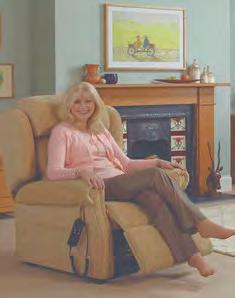



VAT
If you suffer from poor circulation and often find yourself with painful, swollen legs and ankles, our patented high leg lift will make a huge difference

Are you tired of fussing about with pillows to get comfortable in bed? With our ve-point adjustable system, supreme comfort is only a button-push away. Raise








